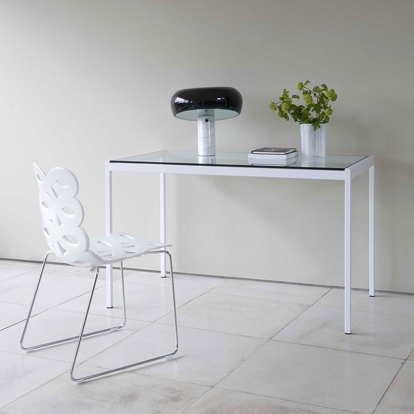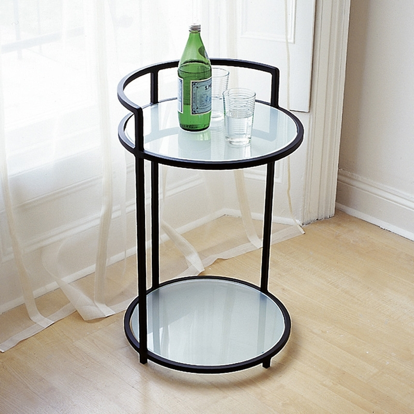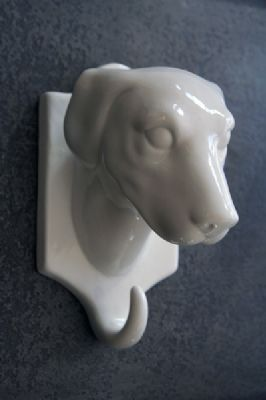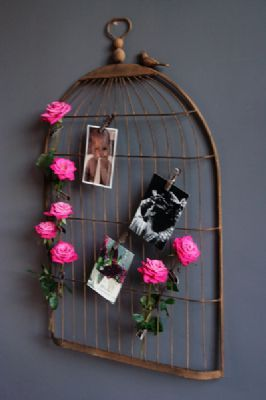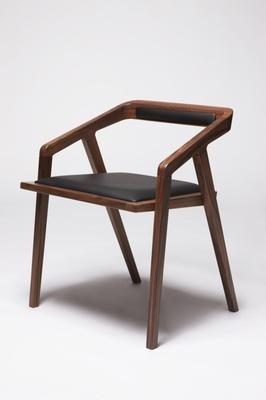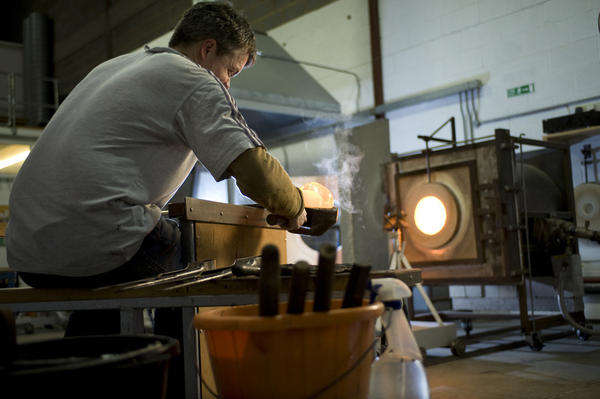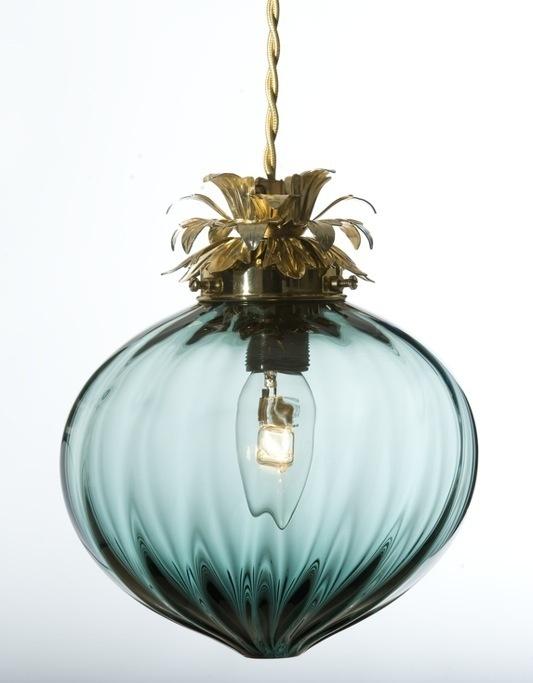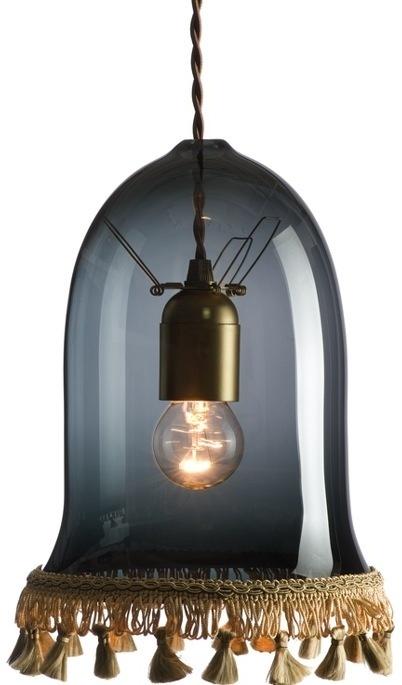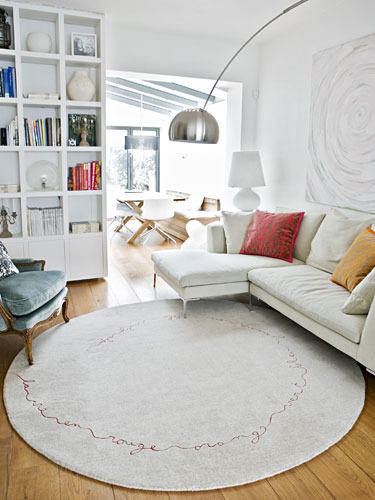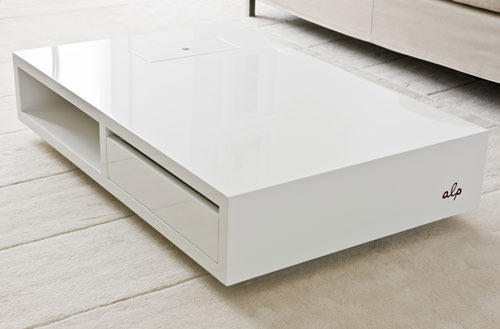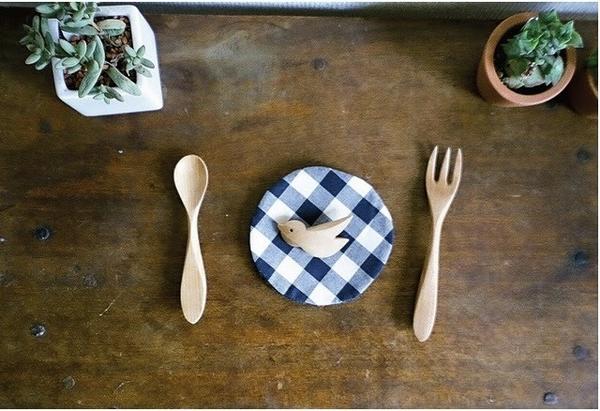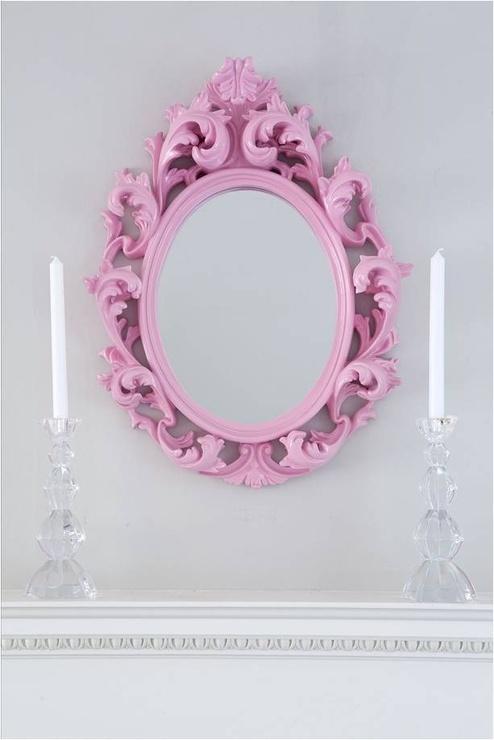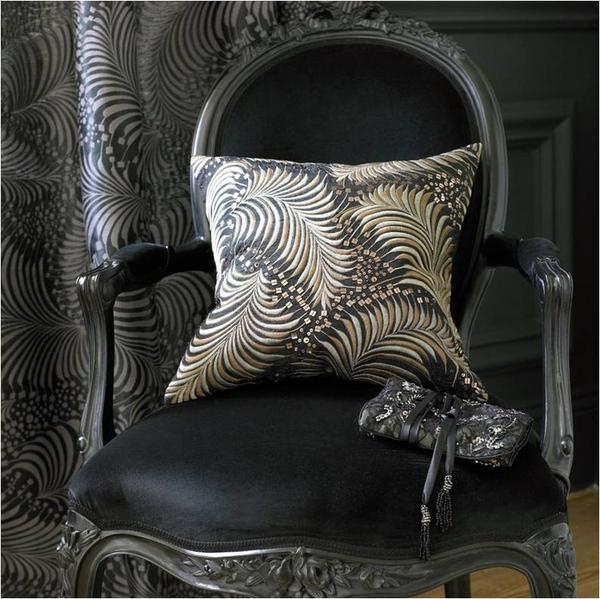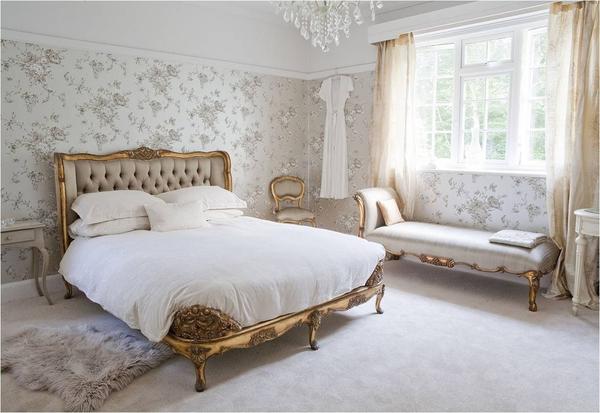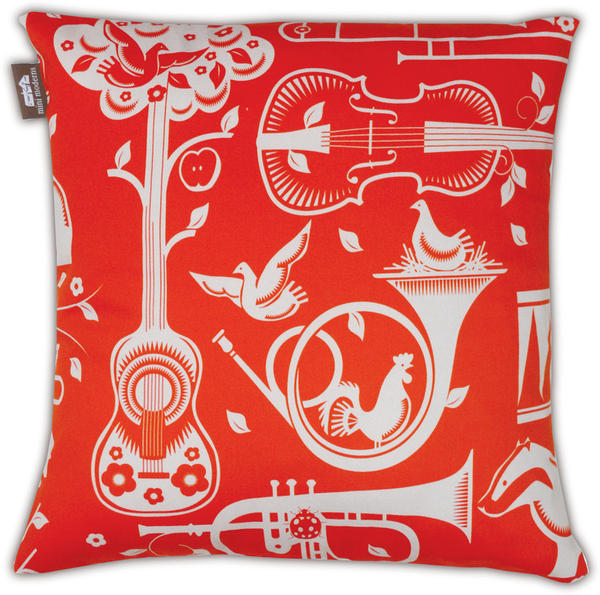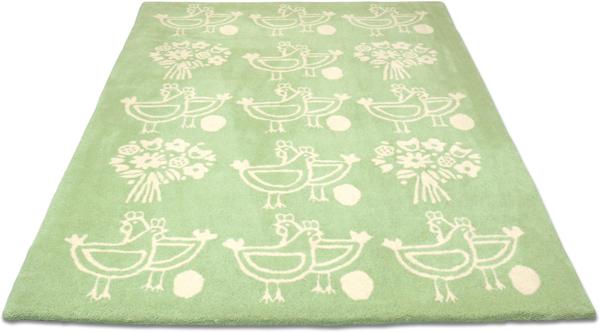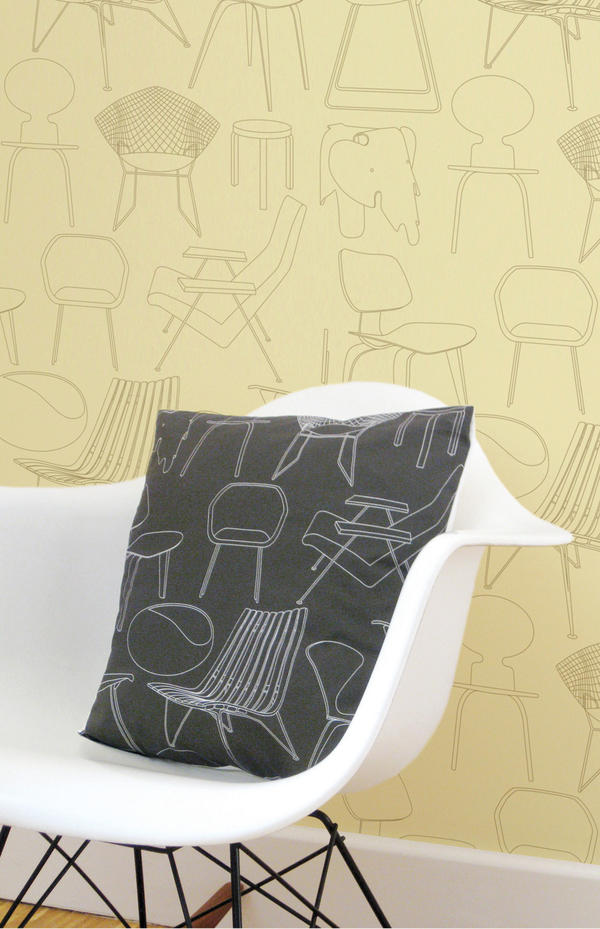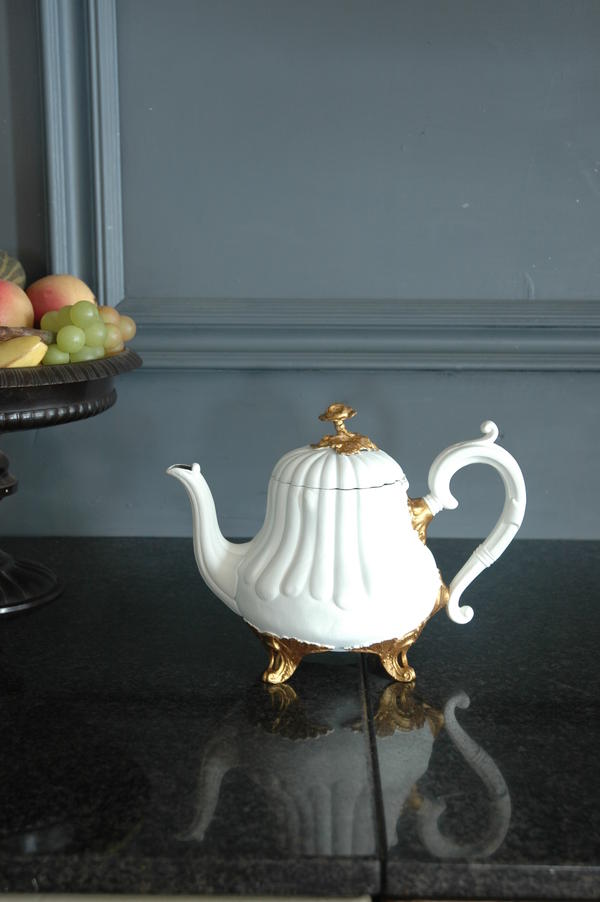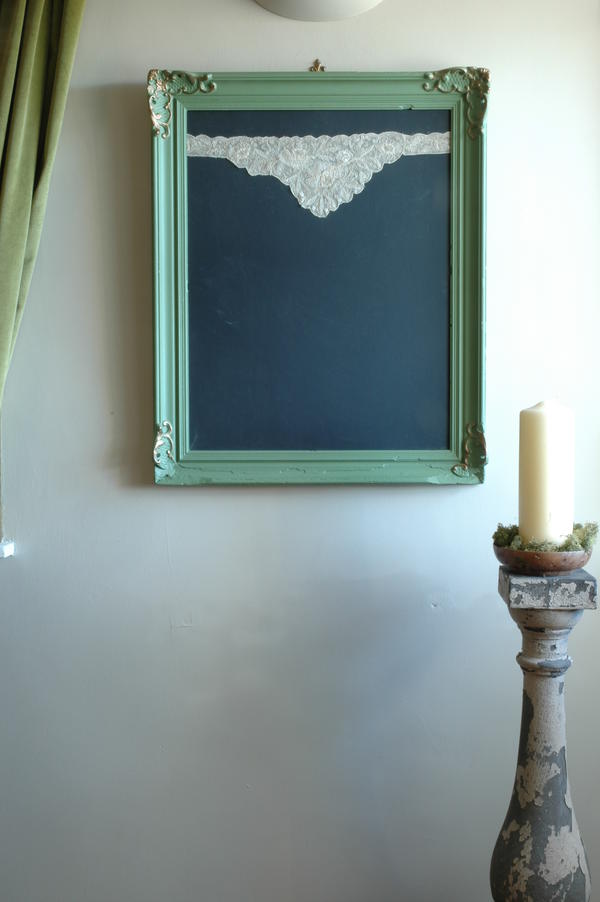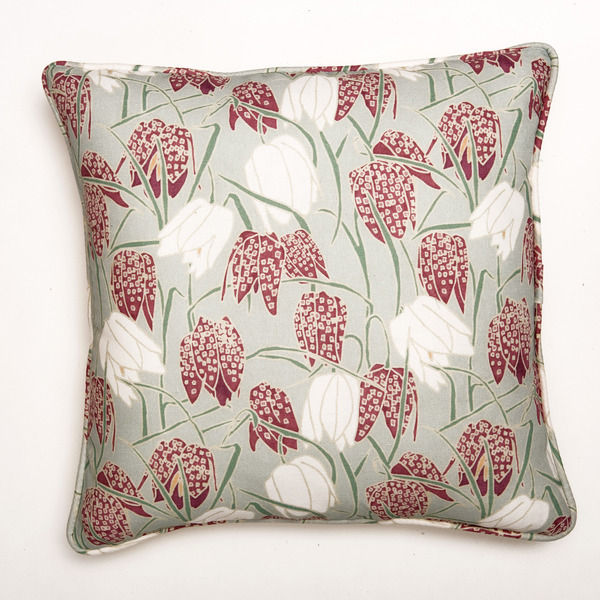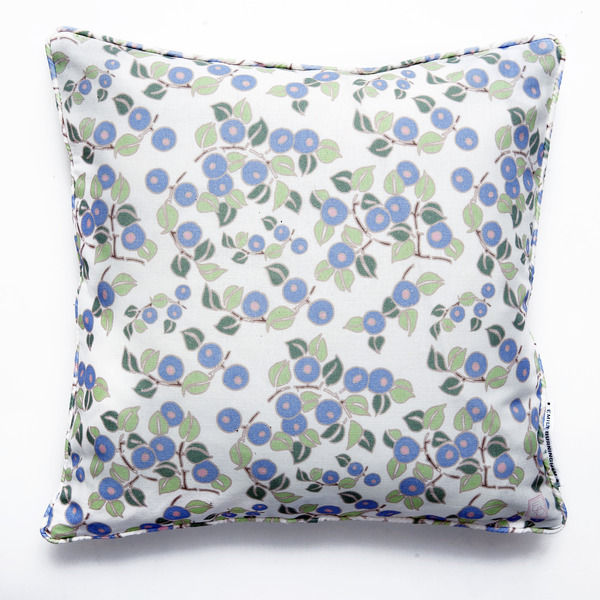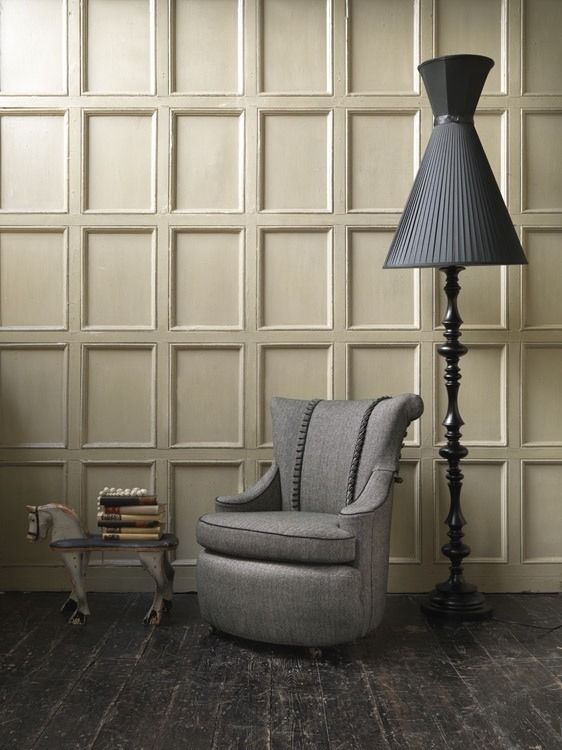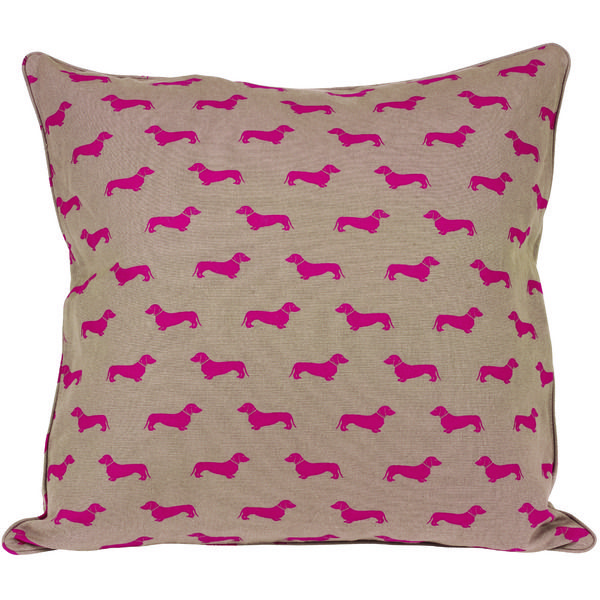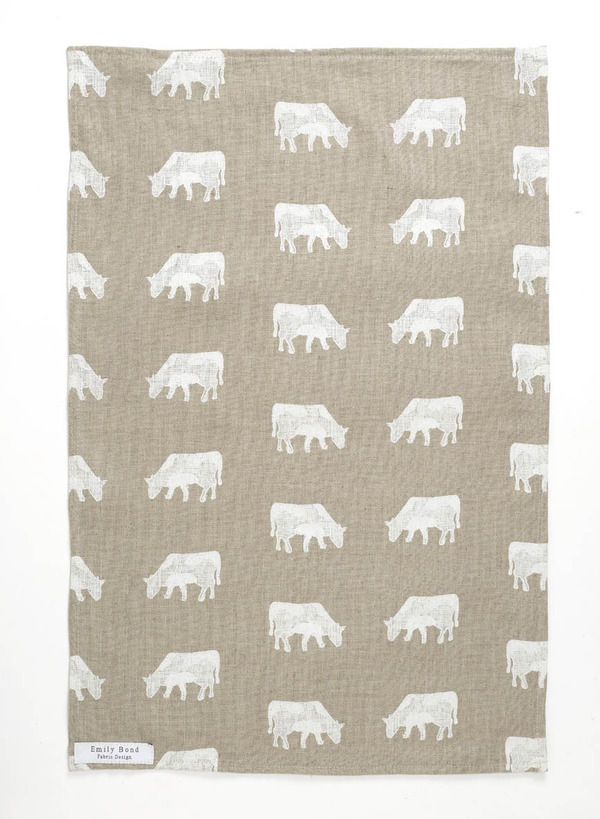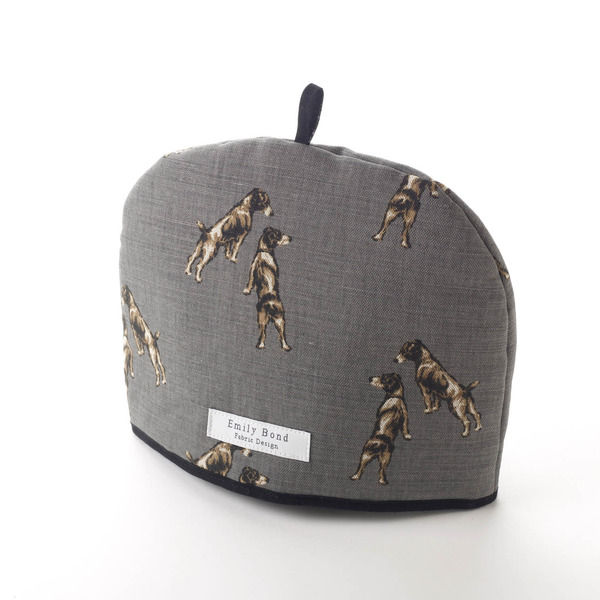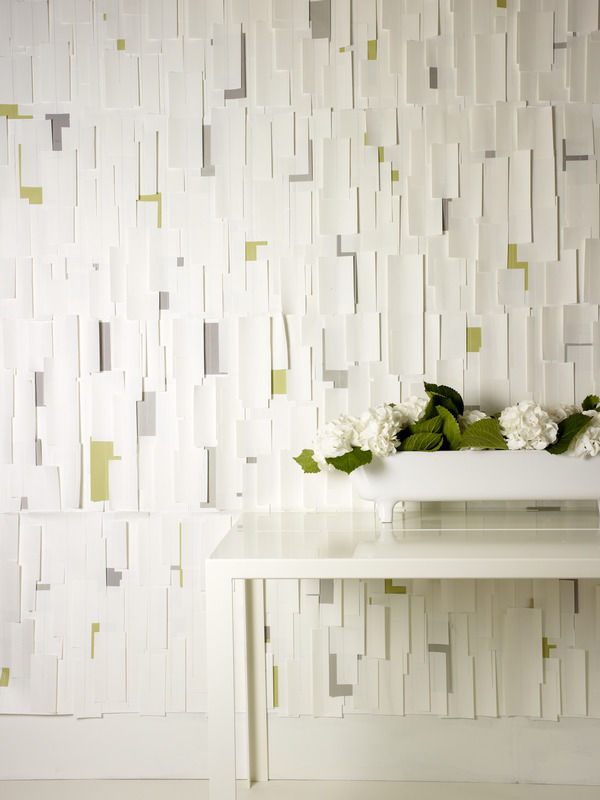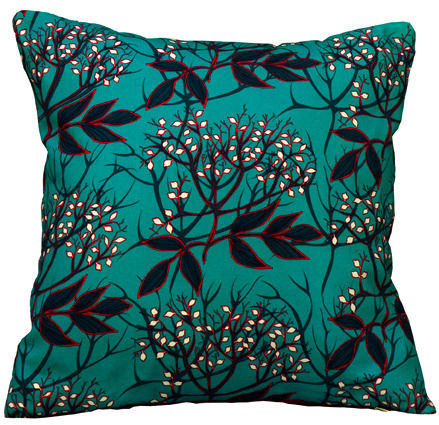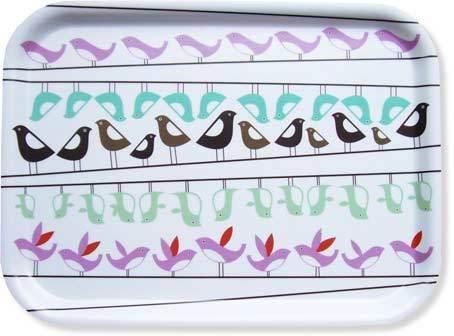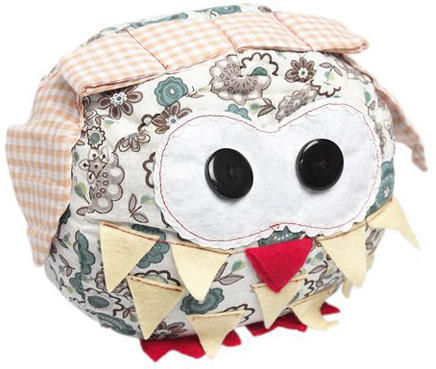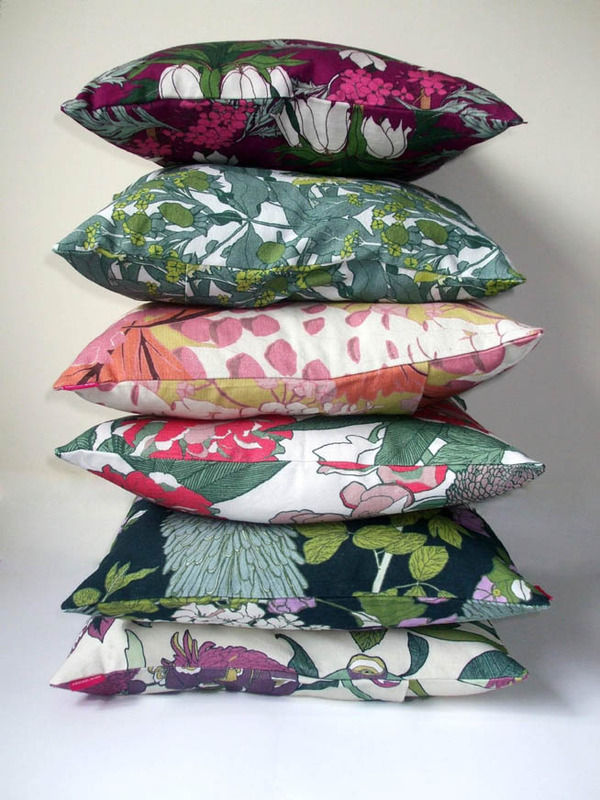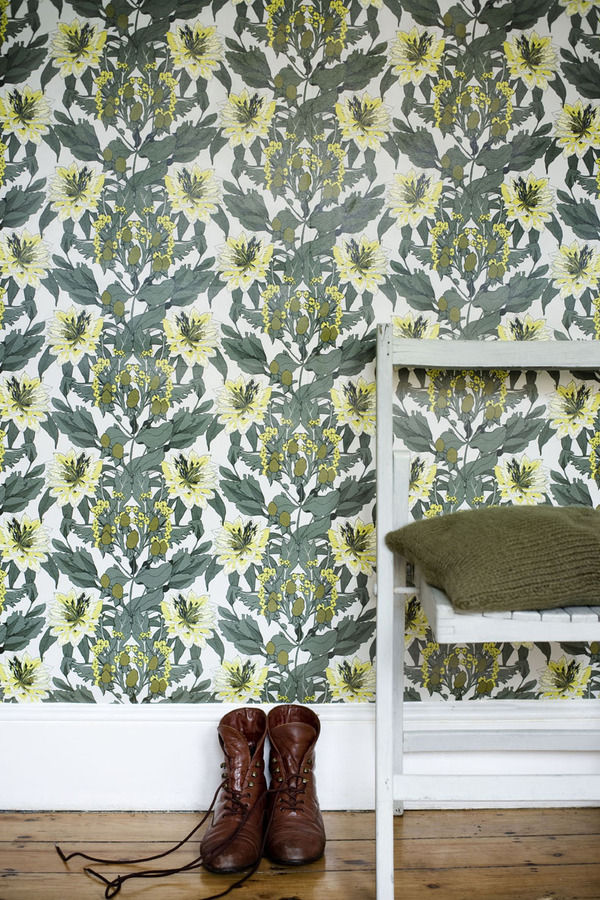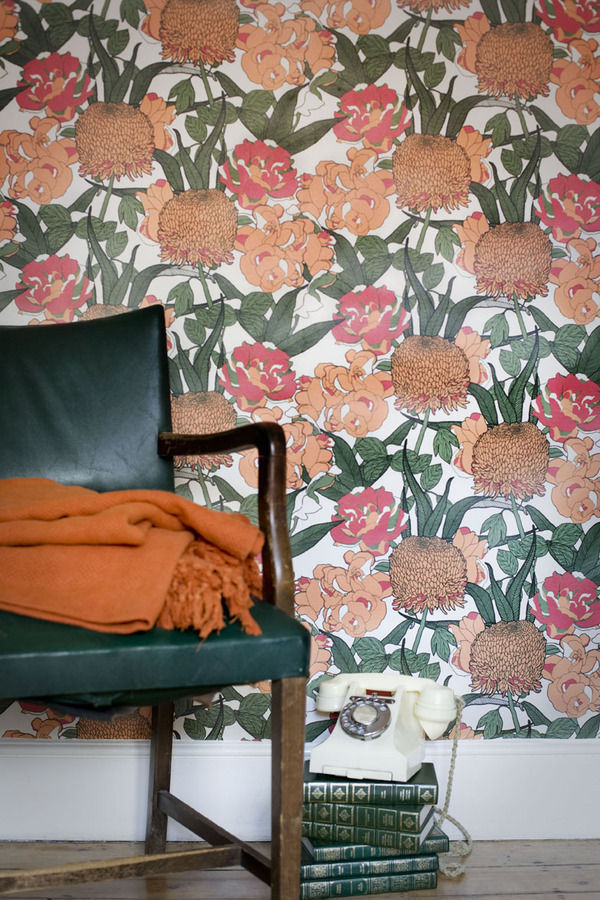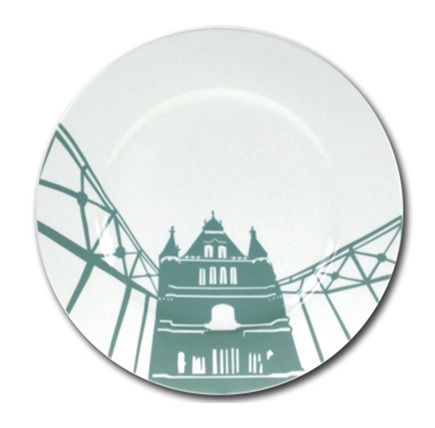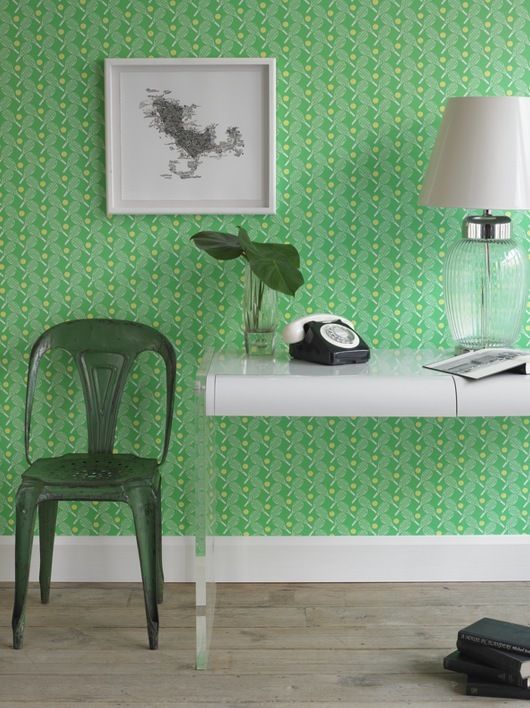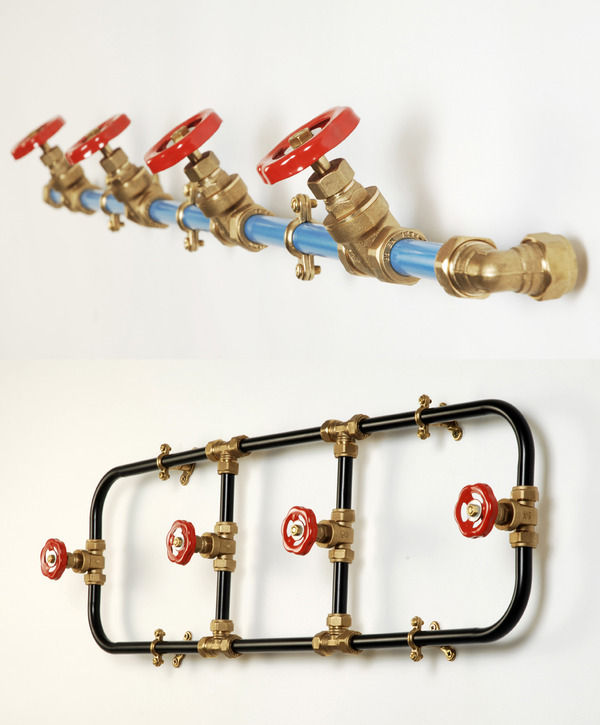Features: Feature
Interview with Tom Faulkner
We talk to contemporary furniture designer Tom Faulkner.
We recently caught up with Tom Faulkner, a designer of contemporary handmade custom furniture, who is based between Chelsea and Swindon. Tom started working in steel in the early nineties, producing original pieces of distinctive metal furniture. Creative metalwork is still a distinctive feature in Tom’s designs today, coupled with a strong focus on simplicity of line and proportion. We love the meticulous workmanship and attention to detail of Tom Faulkner designs, so we grilled Tom to find out more about the creative processes of his design team and what we can expect from his studio in the future.
How would you describe Tom Faulkner designs in three words?
Distinctive, Elegant, Simple.
Do you have an all time favourite designer or design?
Brno chair by Mies van der Rohe is one of my favourites.
What does a typical day in the studio involve?
I divide my time between the showroom, the workshop and my home. The showroom is our office so I’m often doing business things there or meeting clients etc. I design at home and in the workshop, generally doing drawings and CAD work at home, and working with prototypes and any commissions we might be working in the workshop. If I’m working on a new design I always like to draw the elevations at life size, and then I’ll transfer it to the computer or I’ll get the guys in the workshop to do a rough mock and we’ll take it from there. A lot of the design comes in the making I find.
Since you first began working in steel in the early nineties have you undertaken any ambitious bespoke projects, if so what did they involve?
We do all sorts of things, but try not to wander too far off piste! We recently made a 4m Capricorn table for some Russian clients. It had a twin pedestal base, in hand polished stainless steel, which was quite a challenge.
What has been the bestselling design at Tom Faulkner, and why do you think this is?
Our Capricorn dining table is our best seller. It is extremely unusual and very striking, it’s very simple (although not to make!). It has classical lines and proportions and yet it is still contemporary. In polished stainless steel it is a real work of art! It is the design we are best known for, and it seems to always deliver.
What can we expect to see from Tom Faulkner in the near future?
We are adding a lot of wood and marble to our collection (in terms of table tops). We are also adding lots of new finishes to the metalwork.
Interview with Rockett St George
We find out what’s in store for the coming months at Rockett St George
Rockett St George is a fabulous décor brand, established in 2006, which offers a wonderfully eclectic mix of contemporary homeware and gifts. Known for their endlessly appealing range of items that are both beautiful and useful, there is truly something for every room of the house. We caught up with the ladies behind the brand, Jane and Lucy, to find out what we can expect from Rockett St George in the coming months.
How would you describe Rockett St George in three words?
Unique, useful, beautiful.
Do you have an all time favourite designer or design?
Mother nature has to win hands down and the Shell is by far our favourite design (or maybe the feather!).
How was the company founded?
We both love car boot sales. It is the perfect learning ground to find great products within a sea of other stuff. As fellow booters we began to sell what we bought. We then realised that we made a great team and decided to start rockettstgeorge.co.uk in 2006.
How are pieces sourced for Rockett St George?
We find our products in all sorts of places. We do go to show and exhibitions in the UK and across Europe. We also go to antique fairs, craft fairs and open studios. We are also approached by lots of designers, which we love.
Has there been a bestselling piece at Rockett St George, and why do you think this is?
Probably the best seller of all time has to be the Set of 6 Butterfly Prints. They are a classic image, pretty and affordable. The perfect combination!
What is your favourite piece?
Jane: mine changes all the time. I am very fickle and tend to love whatever is new.
Lucy: I love the birdcage memo board. It is beautiful, timeless and very useful.
What can we expect to see from Rockett St George in the near future?
We have just sourced the most fabulous wall/door covering which will transform a boring door to a gorgeous french design. Very exciting!
Interview with Dare Studios
We caught up with Sean Dare, designer at Dare Studios, to find out what's in store.
Furnish.co.uk recently spoke to award winning designer Sean Dare, the man behind Dare Studios, to find out more about the brand and what we can expect to see in the future. Dare Studios produces innovative, contemporary furniture, combining specialist techniques and materials, and championing the skills of local craftsmen.
How would you describe Dare Studios in three words?
Contemporary, classic, future heirlooms…that’s four, sorry!
Do you have an all time favourite designer or design?
I think that would be Vladimir Kagan.
Dare Studios was established in 2009, was it difficult to get your products noticed in such a difficult economic climate?
Surprisingly not! I think we came out with the right designs at the right time.
What do you think contributed to the success of the brand, leading your products to be stocked at iconic stores such as Liberty and the Conran Shop?
The contemporary market is notoriously fickle so we tried to produce contemporary classics. Our designs aren’t youthful as such. They are quite reminiscent of old designs but with a distinctly contemporary function.
What is the most ambitious bespoke project you have undertaken so far?
Probably the time we were commissioned to make some rosewood cabinets for a private client in Dulwich. We’d never used rosewood in the studio before and so we weren’t aware that certain batches of rosewood timber could cause allergies…until it brought down three of our workshop staff with allergic reactions!
What has been the bestselling piece at Dare Studios, and why do you think this is?
Definitely our Katakana Writing/Laptop desk. I think it’s partly because it is designed to be such a contemporary classic, but also because so many people are working from home these days so are more willing to invest in a good design. Again we seemed to hit upon the right design at the right time!
What can we expect to see from Dare Studios in the near future?
We’re very busy at the moment preparing for the launch of our new designs this coming September. Look out for our take on upholstery and the addition of dining tables and dining chairs to the range.
Tea and a chat with Rothschild & Bickers
Furnish visits the London Glassworks for tea with Rothschild & Bickers
On an unassuming industrial estate in North London something quite magical is afoot. Unit 15 houses one of the last glassworks in the UK, and is home to Rothschild & Bickers. Known for their sophisticated and opulent glass lighting, Victoria Rothschild and Mark Bickers invited us in for mug of tea and a snoop around. After sharing a studio at the Royal College of Art and working together on bespoke commissions, the pair decided to create their own range of signature pieces. Produced in batches, each shade is skilfully free blown and hand-finished. ‘Everything we do is hand-made’, says Vicki. Moulds are used to shape the surface of the molten glass, which is then blown out and modelled to create the form. The process is almost hypnotic to watch, and Mark underlines the level of concentration needed to get it right: ‘you have to keep focussed, and you can’t just stop half-way through; because the glass won’t’.
A lot of experimentation goes into the design process and a love of making as well as a respect for their material shines through on our visit. ‘We could never be paper-based designers’, says Mark: ‘it’s not that we render something on the computer and send it off to be made into a mould; we tweak, we edit as we go along.’ ‘We blow something we like the shape of’, says Vicki, ‘and then we’ll re-make it and change it a little bit. That’s what I love about the hand-made part of it. Being able to have the thing in front of you and knock another one out if you don’t like the first.’ Once the final form is decided, ‘you’ve then got the challenge of being able to reproduce it in batches by hand’.
Many of the designs are worked up with a particular interior in mind. The clean lines of the architectural Tiered Light would complement an elegant Art Deco style interior for example. Yet, while the lights often reference historical styles – the Tassel Light evoking Victorian grandeur or the Arts & Crafts style Flora Pendant – they’re never slavish imitations. ‘We’re always quite subtle about how we take elements from the past, whether it’s the fringing or the metalwork, they’re always touches’, says Mark. Likewise, while they might be designed towards a particular style of interior, the lights stand alone as decorative objects and could be put almost anywhere, says Mark, ‘either complementing or contrasting with what else is going on’. It’s the effect of the material as much as the form that contributes to the lights’ decorative appeal. ‘A lot of ours cast either colour or pattern’, says Mark, ‘so the effect is much bigger than the pendant itself’.
The heritage of glassblowing in England and the traditional skills involved in handmade glass production are central to Rothschild & Bickers’ work. ‘We’re using skills that might otherwise be lost’ says Vicki. ‘We did a lot of research on different shapes and forms and how people made things’. The moulds used for the different surface finishes and the techniques of blowing and finishing would have been the same in Victorian factories. It’s looking back at these older manufacturing methods that contributes to Rothschild & Bickers distinctive style and that Vicki sees as helping to set their work apart from modern mass-produced glassware. It’s a labour intensive process that results in astonishingly beautiful pieces with all the natural variation that marks them as handmade.
Rothschild & Bickers will be showcasing some new pieces at 100% Design in September and a bigger website is due to be launched within the next year. To find out more and order online, visit rothschildbickers.com. And if you fancy having a go at glassblowing, the London Glassworks offers one-day courses.
Interview: Annick L Petersen
We interview interior architect, designer and owner of Alp, Annick L Petersen.
Swiss born interior architect, Annick L Petersen, runs design studio Alp from her base in London. Having worked in residential, hotel and furniture design for more than 15 years, Annick now designs a contemporary range of furniture and accessories that combine functionality and classic style as well as offering a full interior design service.
We caught up with Annick to find out the inspiration behind Alp, and what’s next for the studio…
What made you decide to create the brand and what was your first design?
It started when I was looking for a coffee table for our living room and couldn’t find what I was looking for, so decided to design one and my husband and I built it. It was the rectangle coffee table with storage for remote controls and magazines.
Where do you take influence from when designing your range?
I mainly design for myself, create furniture, lighting, rugs, etc that I would like to have in my home. I also love Indian design and patterns. I have recently visited Rajasthan and the architecture of forts and Maharaja’s palaces were the most beautiful. The intricate marble or wood carvings, patterns, fabric and colours were just amazing. I get inspired by these patterns for my cushion designs at the moment.
Do your Swiss roots have a part to play in the functional and contemporary style of the range?
I am not sure if it is due to my Swiss roots, but I do like simple lines for furniture and if possible some sort of storage. I suppose the Villa Le Lac by Le Corbusier and Jeanneret in Vevey where I grew up was an early influence for me as I visited it a few times. It is a small and simple house that Le Corbusier built for his parents in 1924.
You use fairly ornate prints on your soft furnishings. How do you feel this works within the simplicity of the Alp range?
I love intricate patterns and calligraphy for small items like cushions. I think it gives a good balance with the simple lines of the rest of the range. It is good to mix different styles together.
How does Alp fit in with today’s style obsession with shabby chic furnishing, and a more is more approach to accessorising?
Alp has a wide range of cushions, with new designs coming soon inspired by my trip to India.
What draws you to contemporary/minimal interior design?
It is peaceful on the eye and the mind and you don’t tire of it. I enjoy simple lines in interiors but also mixed with different styles. I don’t think it should all be minimal as it would create quite a sterile environment.
Where does your passion for interior design come from?
I wanted to do something creative from a young age, hesitating between graphic design and interior design. I loved the idea of creating new spaces and making people happy in their environment, being at home, work or travelling.
What do you enjoy about designing interiors for other people’s homes?
You have to listen to your client’s needs and then suggest ideas, which they might not have thought of. When the project is done, seeing your client enjoying their new environment, is very satisfying.
What is your thought process when creating a space for others?
Take into consideration all your clients’ needs and requests and then come up with a solution that will satisfy them and yourself too.
How do you work with your clients to ensure you are creating a space they will enjoy?
It is a close relationship between the client and myself with a lot of meetings and discussions.
Do you prefer designing your product range or designing interiors?
I really enjoy doing both, they both bring me a lot of fulfilment.
What current home interior trends are you inspired by?/What is your favourite home furnishing brand?
I really enjoy the mixture of natural wood finish and lacquer finish as used in my console tables and I have a new product coming up soon following that style. I like Tom Dixon’s work, we have his Jack Light, which I still love after all these years. He is always coming up with interesting new designs and materials. I also like the Bouroullec brothers, we have their Algue which has a great 3 dimensional texture. Their designs have beautiful shapes.
What is your personal style at home?
At home, I have a mixture of my pieces, a few designer items, some finds from our travels and markets, some pieces from my grandparents house in Switzerland, so it is very relevant to me and my family.
How would you sum up the Alp style?
The alp style is contemporary, elegant and functional with a bit of fun.
What plans do you have to develop the brand in future?
We have just opened a showroom in Camden, which is great to view the alp range. I am working on new projects for furniture, rugs, soft furnishing, which should be ready soon.
You can find out more about Alp, including the range and Annick’s services, by visiting www.alp-design.co.uk.
Interview with Amanda Talbot
We catch up with interiors guru and editor of SnOOP Amanda Talbot
Amanda Talbot IS interiors, whether she’s writing about gorgeous homes across the globe or acting as a consultant for brands as diverse as Ikea and WGSN, if there’s one things Amanda knows, it’s homes and style. Previously Associate Editor for Elle Decoration UK and Homes Editor for Livingtc, Amanda now edits her own blog SnOOP.
We caught up with her for the lowdown on what it’s like to write about others homes and what makes her tick.
What made you decide to write about people’s houses?
I was already styling for magazines but I couldn’t get any jobs that took me outside the country. I love travelling so I was trying to think how I could see the world and get paid for it. House shoots was an obvious solution.
Which is the most famous home you’ve ever shot?
I guess Karl Lagerfeld at his new Paris minimal apartment filed with Zaha Hadid and Established & Sons. It would be Lenny Kravitz but my Editor at the time thought it was more important for her to interview him. “Yeah Right!”. I was a little gutted at the time because it took me four years to set it up.
I think you can get a real sense of personality from someone’s house? Have you ever come across someone who this wasn’t true of?
Every house I have been in gives me an amazing sense of the people who live there. For example I have been in minimal styled homes and opened a cupboard to find complete chaos inslde. Other times I have been in eclectic homes with a wardrobe filled with suits. SnOOping in someoes home for the day can say more about a persons character than an intimate conversation. I often walk away from a shoot and feel like I know a homeowner better than some of my friends. It still really amazes me how people open up their homes and their lives to me to let others have a look in.
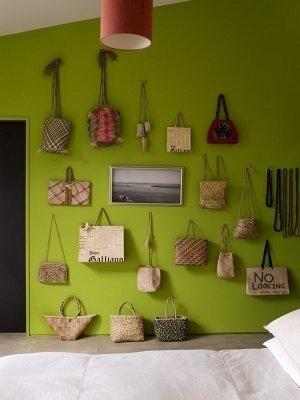
Being in someone’s home and taking pictures is an intensely personal thing – has anyone ever asked you not to shoot or write about a room?
The people who I have covered are usually so proud of their homes so are more than happy for all of their house to be photographed. However, if a room let down the rest of the house we would not shoot it. Funny enough it is very hard to find a house with a great bathroom. We would often leave this room out of a shoot.
Which house has surprised you most?
Fashion Designer and Top Design host Todd Oldham’s Tree House. I went to have his Pennsylvania house photographed and while we were taking his portrait he asked if I would like to see his tree house. When I visited Todd’s treehouse nestled sixty-feet up I was literally drunk! Not with spirits or by grapes but I was giddy with joy. I couldn’t stop giggling and I had a smile stretching ear to ear. I felt adventerous and found myself craking jokes I use to make when I was 12-years-old. Visiting Todd’s creation was one of the most magical days I have ever had.
Do you have a favourite and why?
It has to be the 60’s modernist gem set up in Mulholland Drive. The colours and architecture were amazing. It was my first house shoot in Los Angeles and I guess I have always been on the search to find a house to match it. I haven’t yet.
What’s your own home like?
I live in a modest two bedroom seaside apartment. It’s filled with colour and way too many accessories. I should say it’s eclectic but it just needs a good old edit.
Do you have a favourite era when it comes to design and interiors?
I’m fascinated by Japanese design and modern architecture. The design principals hold onto the country’s historical traditions and rituals but the designs and interiors are modern and relevant to us today. I love all design that connects nature to the indoors.
How do you keep on top of interiors news?
Blogs, twitter and magazines I look too daily. I don’t really follow one in particular because their are always new and exciting ones popping up. Sometimes I do feel like my head is about to explode with information.
What are your favourite decor magazines?
Apartmento is my absolute favourite. I look at British ELLE Decoration for current designers and homes, Livingetc for styling ideas, Wallpaper to see who and what is hot, RUE magazine for their videos.
To check out Amanda’s blog log onto www.heartanddesign.blogspot.com
Interview with The French Bedroom Company
We catch up with Georgia Metcalfe at The French Bedroom Company for the lowdown on everything ooh la la...
What inspired you to start The French Bedroom Company? Pictures, films, experiences?
The French have a knack of getting things right in the creative department – cooking, fashion, art, ballet, interiors; they have a deep-rooted history of visual appreciation. After many years of family holidays to France I developed a real passion for French design – the rococo swirls, the carvings, the femininity of the designs and the soft muted tones – ivory, creams, pale blues. For my 30th birthday, I wanted to treat myself to a gorgeous upholstered French bed but couldn’t find the right one – and so The French Bedroom Company was born!
What do you love about the French look?
I love the sophisticated Parisian furniture, designed for the kings (the most well-known are Louis XIV, XV and XVI), the aristocrats and the rich bourgeoisie with its really over-the-top, flamboyant designs with touches of gold, ebony, ivory, marble and tortoiseshell. But, I also love the less glamorous French provincial furniture made in the towns and cities during the 1700s. It has a more distinct artisanal edge and an element of rural chic, made from woods and painted in a more rustic finish; the tables and chairs just seem to have been made purely for lolling about on lazy sunny afternoons drinking wine with the scent of lavender in the air!
Do you feel your products reflect a French way of life?
The French are synonymous with glamour and high-style. And, recently, French style has become about combining the most glamorous elements of historic and traditional designs with modern high-style. So, a traditionally-shaped French Bedroom Chair with signature French cabriole style legs and carvings is finished in a black velvet with a high gloss black frame, like the Sassy Boo Lady’s Chair, or a traditional shaped mirror is finished in a pale pink gloss, like the Bubblegum Mirror, or a bright purple and silver, such as the Passion Mirror. This mixing of style is reflected in French clothing, food and also architecture.
Which elements of French culture can be seen in your products?
The French have a reputation for the love of fine materials: silks, marbles, precious woods, and classic design that with stands the test of time and stands well above the crowd. A Chanel jacket or a demi-lune console table; both items will look lovely for decades to come and be enjoyed your children and your children’s children. French style and culture is about buying precious things that are to be treasured, and are built to last – in both the style and the heirloom stakes.
What is your best-selling product, and why do you think it is a bestseller?
Our best-selling item is our Versailles Upholstered Bed. We love this item because it’s the height of decadence, and a real statement piece, but at the same time it doesn’t scream “Look at me!” The muted tone of the beige silk sits beautifully against the antiquated gold frame. It’s such a good seller because it sits so well in almost any room scheme – so it’s great in a traditional room with carpets and swagged curtains, and also wonderful in a more ‘loft style’ room scheme with painted floorboards and blinds.
Where do you see your company in five years time?
We like to think we really push the boundaries of design. The mix of modern and traditional antique styles is a current trend, but we intend to explore this even further by working with suppliers to develop furniture, lighting and mirrors with quirky colours and finishes. Without giving too much away, we are working with a supplier on a new plastic which contains hundreds of LED lights – so your bed can light up! On a more traditional note, one of our favourite pieces we sell is the Waterloo Chair – a French antique chair upholstered in vintage Union Jack Flag fabric for the perfect mix of French and British! It’s these sorts of pieces that we want to source and design to give our company a quirky and fun edge.
Where is your favourite place in France?
The Hotel Costes for its unashamed love of luxury. It has been a den of decadence for decades for the French aristocracy, the bourgeoisie, fashionistas and celebrities. The furniture, lighting, fabrics, and ambience all create a very debauched and self-indulgent venue where you can almost hear the adulterous whisperings of the past behind Louis XV sofas – and they serve the most delicious afternoon tea too!
If you could describe The French Bedroom Company’s ethos in 3 words, what would they be?
Inspirational, aspirational and timeless.
How do you ensure that your products have a unique edge?
We choose our suppliers really carefully. When we look to work with a new supplier we don’t just look at their product range; we also look at their quality of products, the ethics behind their furniture production (our largest furniture supplier is a big family business who only make furniture from wood from sustainable forests), their flexibility (we like to offer items in alternative sizes and colours where possible) and also their delivery timings (we know that when our customers want their new furniture they want it asap). We work with over 30 suppliers to offer a really comprehensive and also unique range of items that perfectly complement each other. All of our staff have interior-design training and backgrounds, to offer help and advice to customers. We aim to take the hassle out of choosing furniture, so all that’s left is the fun!
Interview: Mini Moderns
From quirky 1950’s textile designs to vintage toys and games, Mini Moderns has it all.
British design duo, Keith Stephenson and Mark Hampshire of Absolute Zero Degrees, a graphic design based outfit, are behind the wonderfully quirky Mini Moderns collection.
We interviewed Keith Stephenson to find out more about their exciting, retro collection….
If you had 3 words to describe your collection what would they be?
Contemporary, Soft, Modernism.
How would you describe the idea and aim behind your slogan: ‘Homeware for design conscious families’?
When Mark and I created the Mini Moderns wallpaper collection we wanted it to appeal to kids and, what we were calling then, “kidults”. No one else was appealing to a cross generational market at this time. We wanted the consumer to be able to buy something cool that their kids would love but that they could also live with happily.
Despite having a fantastic following and reputation with the kids products, we have always created products that we’d love too. This, I think, gives our print designs a lot more depth than papers produced purely for adults – which are usually trend driven – or pure kid’s patterns, which are often twee. I think it is very easy to spot a Mini Moderns design.
What would you choose as one of your favourite design classics of all time?
Mine is the Eames rocker; Mark’s is the original Mini car.
What inspires you to combine retro and modern styles and what do you feel this brings out in your products?
We’ve always had this mix in our collection – there’s something optimistic about mid century modern designs in print – so we wanted to capture some of that – but giving them a contemporary edge – not a rose-coloured vision of the past.
You operate a predominantly ‘Made in the UK’ policy, how important do you believe it is for the future of interior design to become more eco-friendly?
We’ve always produced in the UK – it has been our policy from the word go. We wanted to utilize the amount of great UK producers and build good relationships with them, that way we know that our products come from sweat shop free environments. It also means the products travel less so we try to keep an eye on our carbon footprint so even when we export the amount of journeys is limited. The only products which we don’t produce in the UK are our rugs. These are a license product and are produced with a company who approached us. However, we make sure that the rugs are delivered direct from the factory to the customer so they don’t arrive with us and get dispatched again on an extra unnecessary journey.
What’s the most popular design from your collection and why?
We have several ‘hits’ in the collections which shows the cross generational appeal of our products. The ‘Town’ print still continues to be popular even though it was produced in 2005, and has been influential to other designers. This has been used in dining rooms and children’s rooms. Our ‘C60’ retro tape cassettes wallpaper has also been a hit with dads and older children – and has recently been used in the refurbishment of the BBC Radio 6 studios.
Recently our ‘Pet Sounds’ wallpaper has had great success – which I think is indicative of a Mini Moderns design – no-one else would have even thought of using the imagery and combination of imagery we used. It’s easy to produce something ‘out there’ but the skill is making it still something that people want to spend everyday living with.
Can you tell us a bit about your new ‘Festival’ wallpaper and what the story behind it is?
We’ve collected festival of Britain memorabilia for a long time now. The Festival of Britain in 1951 was an exciting glimpse into the future, celebrating the new wave of British design, with design for all available via the introduction of Hire Purchase schemes. New design was everywhere. It’s the optimism we love, and over the years we’ve amassed a number of items celebrating it. The C.O.I.D. book Design in the Festival is a particularly inspiring find. Having been huge fans of the Festival of Britain, it was an honour to be commissioned in 2008 by the Southbank Centre to reproduce as wallpaper, one of the Festival’s signature patterns, Net and Ball. This had been designed in 1951 by the architects of the Royal Festival Hall, Peter Moro and Leslie Martin, as a carpet pattern for the Hall. Our obsession culminates in our new wallpaper in commemoration of the Festival’s 60th anniversary, featuring our favourite pavilions and sights.
How do you experiment with colour and how important is this to the finished print?
Colour is very important to us and Mark is a great colourist. Because we’re fundamentally print designers more than product – it’s this aspect of our designs that excites us! The prints tend to be rich and dense with imagery so getting the balance right with colour is very important. We don’t work seasonally or are trend driven with colour, instead we go with what works with the print. These colours then go into our Mini Moderns colour book, and are used in future ranges so that you can mix up our patterns and there is still a synergy across all our collections. We also have fun with the names of the colours too – like “milk chocolate” or “powder paint blue” etc, most of which relate to a collection or product. Our ‘Harvest Orange” colourway was an homage to the Neil Young album ‘Harvest’ as it was first introduced in our Folk Rock collection last year.
I love your Folk Rock cushion collection (If I had a camper van, which I’ve always wanted, then I’d fill it with these!). What inspired this collection of prints?
The ‘Folk Rock” collection was inspired by a very rare holiday for us to the West Coast of the US. We spent time in LA, the Big Sur and San Francisco. Pet Sounds was a mix of two concepts for prints we’d been working on and the time away helped us to focus and consolidate it into one. We had been working on a musical instrument print and a British wildlife print and then decided to combine them to make our Woodland cacophony – which was originally called ‘Fanfare’ – but when we realized where the collection was going – a nod to the Beach Boys seemed appropriate. After all we were in California. ‘Alice’ was also a print which, finding a section of a dirty piece of vintage barkcloth fabric in a thrift store in California, took on a life of its own. Our friend Alice had asked us to design a wallpaper for her house – and we had always thought – ‘if Mini Moderns did a floral – what would it look like?’ so we used the vintage fabric as inspiration and created the print. As it was part of the Folk Rock collection we thought Alice was a good name for it, and as Lewis Carroll’s heroine had long been an inspiration for 60’s West Coast psychedelic artists – like Jefferson Airplane – so Alice it was. We supplemented the cushion collection with our ‘International Cocktail Hour’ range of found vintage fabrics with a Trader Vic’s atomic/Tiki edge.
How do you think your prints can transform a room?
Prints give a room more character and depth.
How do you see print design progressing in the future?
Our prints develop from season to season. We’re more confident in our aesthetic now. Initially it is daunting as you have no audience for your product, so it’s easy to lose your direction and then you stand back and can’t quite understand what your designs are trying to say about you as a brand. We had to have the courage to just put our ideas out there and it has seemed to work.
What did you last buy for your own home?
Our last two purchases were two lamps: One is a “base lamp’ by Tom Dixon – it was rather expensive but beautiful! The other was by Group Design and it’s a sleek white reading light – which wasn’t as expensive but is by no means less beautiful…
What advice would you give to anyone thinking of introducing print to their home?
Most people will send out wallpaper samples but be focused about what colours you want for a room. Otherwise you end up with a confusing mess of hundreds of pieces of paper. The process should be fun. Also, try and go with an independent designer, there are more like us out there, and most wallpaper is produced in a handful of factories across the UK. Even the smallest independent designer will have the same high quality as a larger company. That way your room will have individuality.
If you could collaborate with any designer who would you choose and why?
I’ve previously worked with Wayne and Gerardine Hemingway when I was a print designer at Red or Dead. Also, recently both Mark and I have worked with them as part of a team curating areas for their Vintage festival – they are great to work with and when you do you become almost part of their family. We will be working with them again for Vinatge at the Southbank in July.
Other designers that we would work with would need to be someone who didn’t overlap with our skills, like product designers, that share our philosophy and aesthetic. Mark would love us to work with someone like Terence Conran – as he is a lifelong hero of his, and Russell Pinch is also fantastic. We were extremely excited when the Conran Boundary hotel specced up our wallpapers for a number of their rooms. A forgotten vintage brand would also be good to work with – we had always wanted to work with someone like Ercol – but someone like Gplan or a company like Ercol who have embraced their heritage would be great.
What new projects are you working on and what do you hope to achieve in the future?
We’re currently getting our new collection together. “Festival” is the first in this collection which launches as a whole in September. The collection is called ‘Daytripper’ and celebrates British holidays, hobbies and pastimes. We’re also creating new accessories designs for mugs and bags. We have a wealth of prints now in our back catalogue and are able to pull these into different products – so as well as new prints – there will be some old Mini Moderns favourites on other items too.
Interview: Ghost Furniture
Hauntingly beautiful: The Ghost furniture collection makes a striking impression
We caught up with Di Overton to find out more about the collection and what gives it its ghostly beauty.
If you had 3 words to describe your collection what would they be?
Eclectic, eclectic and eclectic.
How would you describe the idea behind ‘Ghost Furniture’ and what makes it ‘hauntingly beautiful’?
The original idea was to create something new from discarded items. Not shabby chic but eco chic. I’m no eco warrior but it saddens me when I see formerly beautiful items cast aside when they still have some life in them. We use the term ‘hauntingly beautiful’ because we always try to let the original piece show through the new design making it somewhat ghostly.
How did you first become interested in creative design?
I think I was born creative. No doubt I would have re-designed the labour ward had I had the skills. I think it’s in the genes. I seem to have spent my life re-creating things.
What would you choose as one of your favourite design classics?
The Egg Chair by Arne Jacobsen without a doubt. It wraps itself around you; will sit in any interior design scheme, and it’s timeless.
What inspires you to take vintage designs and turn them into something that’s eco-chic?
I’m inspired every time I look up. I live in The Northumberland National Park and am surrounded by beauty. That beauty is not manmade but I do believe it can be translated into product design. I seem to have the sort of brain that takes in a view and turns it into a design, how I do not know but it seems to work.
How important do you believe it is for the future of interior design to become more eco-friendly?
Landfills can only take so much. It can only go on for so long this throwaway society of ours. I like to think that interiors can be treated like fashion – take a little black dress, add an accessory and you get a totally different look. So why not do that with interiors?
What is the most popular design from your collection and why?
There are two – Chairs and Blackboards without a doubt. I think chairs are popular because we
design them to fit into any room in the house; they make a statement about the people who buy them and blackboards because they’re so useful. Chalking up a message is so much more
glamorous when in an ornate vintage frame, don’t you think?
You use dead flat matte paints which are sourced in France and that are specially mixed for you. How does this paint make your furniture unique and what look does it create?
In the UK there is no such thing as a dead flat matte paint for wood and metal, the flattest we can get has 5% sheen. Dead flat matte hides a multitude of sins and needs no preparation which means we can keep the price down. It’s like applying double cream to the furniture, sometimes I have to stop myself licking the paint brush it looks so delicious. It creates an antique look without all the chips and scratches that have to be done when creating shabby chic. I’d like to add here that I do love shabby chic but only when it’s shabby with age not with a paint effect. I want to see the history of a piece shining through.
I particularly love the Marilyn chair, could you explain how Marilyn’s famous photo pose inspired this furniture piece and what materials you used to create it?
I found a 1930s satin pillowcase at a brocante in Paris on a very windy day and immediately thought of the famous photo of Marilyn Monroe when it was billowing up in the wind. The only way I could think of re-creating that effect was to fill the back panel of a salon chair with of much of the fabric as possible. My mind works in mysterious ways.
What do feel your furniture and accessory pieces can bring to a room?
A story. Every piece has a history and its story is told to the buyer when they purchase it. This is most important to me and, from what I can gather, to them also.
What did you last buy for your home?
A huge spiral staircase made from cast iron with lattice work treads. The light casts down on it from a roof light above and creates a beautiful pattern on the floor.
What advice would you give to anyone shopping for a unique furniture piece?
The same advice I would give to anyone buying anything – KNOW THAT YOU LOVE IT – any doubts don’t buy it. A piece of furniture should be a reflection of you and your life so you can live in harmony with it.
If you could collaborate with any designer who would you choose and why?
I think I’ve already done that. In 2010, I collaborated with Kathy Dalwood the sculptor of fabulous concrete busts. Together we created a range of Concrete Tassels cast from vintage originals and trimmed with vintage passementerie from the merciers of Paris. It was a fabulous experience and I doubt whether anyone else could surpass it.
What new projects are you working on and what do you hope to achieve in the future?
I have just created a new effect by using a lace stencil and creating two different textures but in the same colour. I’ve just finished the first piece which is a Regency console table and have used the effect on the table top which has made it look as though it is made from lace. The whole piece is black and looks very dramatic.
A future achievement would be to be able to continue creating new and innovative pieces at a pace that is pleasurable, up to now I have achieved that and would love to keep it that way.
View the whole collection...
Interview: Emily Burningham
We interview British textile designer Emily Burningham
British textile designer, Emily Burningham, has a beautiful collection of versatile fabrics inspired by the patterns and colours in nature. We caught up with Emily to find out what inspires her and what new projects she has on the horizon...
If you had 3 words to describe your style what would they be?
Balanced, stylized, English.
Where does your inspiration come from?
Japan, with its fascinating culture and history has a strong influence on my designs. The boldness, simplicity and use of colour in Japanese textiles have inspired a great deal of my work. Design of the 1920’s and 1930’s is perhaps the other greatest resource for my patterns. English and French textiles from the turn of the century, ceramics, furniture and design of the Arts and Crafts movement have inspired designs such as Poppies and Trees in Pots amongst others. Also, the traditional flowers of an English Garden in summer with an abundance of Hollyhocks, Roses, Delphiniums, Lupins and Foxgloves and an array of visiting insects is a happy, comforting place for me to be.
How have your travels inspired your designs?
Visiting other countries where colour in design is used boldly particularly in traditional regional clothing when enhanced by the light and hot climate is a huge inspiration in contrast to the often subtle, muted tones of England. Saris from India spring to mind.
How important are colour and pattern to your designs?
Colour and pattern are the core of my work and often the most difficult aspect to work with. It’s so easy to get it wrong! One also has to remember that people have to live with the designs and never tire of the pattern.
How do you think pattern and print will continue to keep interior design fresh and exciting?
Pattern, colour and trends are always changing, with many different influences such as a countries political, social and economic circumstance. These changes reflect in all areas of design which has been apparent through the ages. As a result interiors, product design and fashion, all absorb these changes and push boundaries which keeps design fresh and exciting. Not sure what’s going on at the moment though!
What’s your favourite material to work with and why?
I love working with many different materials such as paint, paper, clay, cloth. I have just printed on some 100% linens which I am really pleased with, and also some cotton lawn for dress fabric. I think natural fabrics which feel irresistible and hold colour well are my favourite. I look forward to working with some silks.
What’s your ‘hero’ product and why?
The Fritillary pattern has been hugely popular. It was inspired by the delicate flower which my grandmother was very fond of and we planted together in her garden. We used to marvel at how nature managed to make such detailed accurate patterns on its petals. A lot of people also seem to have the same appreciation hence the popularity of the design.
What is the most recent design product that you have bought for your home?
I recently bought an old 1930’s sofa which was completely falling apart which I had reupholstered in one of our designs. It’s wonderful to refurbish something to its former glory and then add a modern twist with a new fabric.
Where do you like to shop for quirky furniture pieces for your own home?
I strongly believe in salvage. I use ebay for purchasing vases, tiles, pieces of fabric and furniture can be addictive! Antique shops are also a happy place for me to be – however, sadly there seem to be less and less around. My father has taught me to never pass a skip without taking a look inside – one never knows!
How important do you think it is for interior design to become more eco-friendly and why?
As designers and consumers we have a great responsibility to make a difference by choosing careful and considerately manufactured products. As a manufacturer I am up against cheap imported items, where one does not know the true process of manufacture. For us as a business working with UK suppliers we are confident in knowing that our products have been created with respect to the environment and to those who carry out the work – which our customers appreciate.
What advice would you give to aspiring interior designers?
Work with design you believe in, don’t be afraid of using something new or unknown – if its good design and you can see it working go for it! So many people are timid and stick to the same old formula.
What new projects can we look forward to seeing?
I am always working on new designs and ideas for future product ranges. Having just launched our second collection of textiles at Decorex, I will now begin the new range, hopefully including some wallpapers. We are soon to introduce a selection of quilted wash bags in some vibrant small scale patterns...
Interview: Aiveen Daly
We interview furniture designer Aiveen Daly
Inspired by haute couture gowns, Aiveen Daly’s collection boasts hand-upholstered designs with intricate detail and a gorgeous chic look.
Read on to find out more about Aiveen Daly’s style and inspiration...
If you had 3 words to describe your collection what would they be?
Luxurious, contemporary, different.
What inspired you to get into the world of interior design?
I love colour and textiles and wanted to spend my life doing something more creative.
Your collection is hand upholstered, how do you feel that this enhances the quality and aesthetics of the designs?
My team are meticulous to the point of obsession. We work on fabrics that come from all over the world sometimes they have been specially produced at hundreds of pounds a metre so we can’t make any mistakes! Doing things by hand allows for more creative fluidity. It makes each piece totally unique compared with mass production where a lot is done by computer and huge machines.
You have a selection of beautiful vintage pieces, how do you think vintage-inspired furniture will continue to add personality and character to both modern and traditional interiors?
We love to revive old pieces and dress them in something contemporary. Old furniture is often magnificently built and so literally lasts hundreds of years. BBC Homes & Antiques magazine suggested the Aiveen Daly collection would be the antiques of the future. We really build our pieces to last.
Your designs are inspired by haute couture gowns and Saville Row tailoring, which are your favourite pieces and why?
My favourite Stiletto chair is the Love Knot as it is simple and classic like your favourite piece of clothing or jewellery that never goes out of style.
What is the key link between fashion and design for you, and how do you think 2011 fashion trends will influence interior design?
Fashion for me has always been more experimental and quirky than furniture design. Tailoring is big again with very classic cuts – simplicity with attention to detail will be important. I think a new minimalism will emerge that is much warmer than the last wave.
All of your work is manufactured in Britain, how important do you believe it is for interior design to become more eco-friendly and to help build the British economy?
I think it is so important to keep traditional trades alive. Britain has always been renowned for high end craftsmanship. I think it should be more clearly labelled on furniture where it has been manufactured as it definitely influences customers. It is much more sensible to invest in something that you will keep for years and pass down to your children than to buy cheap imports that you have to replace every time you move.
What is the most recent design product that you have bought for your home?
My new Aphrodite lampshades in pale grey silk with hand braiding.
Where do you like to shop for quirky furniture pieces for your own home?
Merchant Archive and Retrouvius.
Do you have any new collections on the horizon?
We have just made a magnificent 4 poster bed called Arabian Nights with hand beading and stud work. We will be doing a lot more with embellishment in the near future.
Interview: Emily Bond
We interview British fabric designer Emily Bond
British fabric designer Emily Bond designs beautiful fabrics inspired by animals and the countryside.
We find out more about Emily, her inspiration and her style...
If you had 3 words to describe your style what would they be?
Eclectic, country, fresh
Where does your inspiration come from?
My life, my childhood and all people and animals in it.
What is it that you endears you so much to British countryside?
There is nothing quite like an Autumn day walking with the dogs through the country side, there Is nowhere I’d rather be.
Why do you choose to feature animals in your designs and what do you feel they bring to a variety of home interiors?
I love animals on fabric it brings an element of fun into your interiors, but the way I put them together and the colours and fabrics I use it makes them sophisticated and classic at the same time.
What’s your ‘hero’ product and why?
My blue dachshund tea towel is started the business, people love dachshunds!
How important is pattern and repetition to your designs, and how do you think pattern will continue to keep interior design fresh and exciting?
It’s very important and each design is very repetitious which is what I love about my designs. I like simply fresh designs.
What’s your favourite material to work with and why?
I love linen because it so natural.
What is the most recent design product that you have bought for your home?
The last product I bought for my home was an Anta foot stool, I love their checks in my home and they complement with my fabrics beautifully.
Where do you like to shop for quirky furniture pieces for your own home?
Reclamation yards.
How important do you think it is for interior design to become more eco-friendly?
I think it’s a difficult one, as I agree we must be as eco as possible, I love old things, antiques quirky finds in reclamation yards which are not made in an eco way! So I think if we can bring it into interior design somewhere along the line that can only be a good thing.
What advice would you give to aspiring interior designers?
Go and look for things different and look for small little company like me because we are individual, unique and fresh.
What new projects do you have on the horizon?
A children’s collection, which I’m really looking forward to designing.
Interview: Tracy Kendall
Tangible yet beautiful wallpapers: Tracy Kendall designs something a little bit different for your walls.
London based wallpaper designer, Tracy Kendall offers a beautiful collection of contemporary wallpapers and just recently exhibited at Decorex and won an award for her stunning Sequin design.
We caught up with Tracy to find out what inspires her to keep creating and designing...
If you had 3 words to describe your collection what would they be?
Simple, original, touchable.
You recently exhibited at Decorex and won an award for your stunning ‘Sequin’ wallpaper. What does this mean to you and what do you hope that your wallpapers bring to home interiors?
It means a great deal to me to have such a prestigious award given to me. I work in such a bubble sometimes, I don't design for anyone other than myself and all the collection are my designs so to have such a great recognition of what I do is really special to me. I hope that it can inspire people to take risk but with products that they fall in love with, to have in their home items which have won their heads, rather than their heads all the time, i.e., not the safe option.
Since starting the production of your hand-produced graphic range in 1996, how have you developed and experimented with different designs and scales?
I've moved into more textural work, adding different textures as I find different manufacturing partners along the way. Sometimes the designs can only be made in house, such as the sequins, but with others I have been able to use external specialized manufacturers for which is great.
What inspires you to keep designing and creating?
Curiosity; I love to challenge myself both visually and technically with my work.
You have taken 3-D wallcoverings in a new and exciting direction. So, what are your favourite materials to work with and why do they work so well?
Paper is still my favourite material; having studied fine art printmaking I am always struck by how much paper can do or be made to do.
Your wallpapers could be described as tangible, and I particularly like love the sequins and also the stitched text. Why do you think that wallpaper should be something that will create an impact and evoke a reaction when people see it?
I don't think that is limited to wallpaper, chair or cup can give the same reaction but my chosen medium is wallpaper and by hopefully creating a wallpaper that gives people more than one option of sense in which to view the paper helps to make them fall in love with it.
What is your best selling design from your collection and why?
It’s probably still the fork design, the first but it is so simple, so easy to use in the home or commercial spaces, it is big but not over powering, it makes a statement but doesn't yell for attention all the time, it just works very well, thank goodness.
How do you feel that patterned wallpaper will develop, and what direction do you hope it will go in the future in order to keep interior design fresh and exciting?
There are so many new and exciting wallpapers coming out, I hope that they continue to have a aspect of respect for the environments they are going into and don't try to over whelm them, its wallpaper, it is meant to have mirrors and pictures on top of it and chair in front of and your back to it as well!!
How important do you think it is for interior design to become more eco-friendly?
Very, not always in such obvious "what materials" do we use way, it's more about how much we change interiors rather than grow them and how much material we waste as a part of the manufacturing process. as I make to order, I have very little waste, all my waste then goes into sampling for sending out which works very well for me.
What is the most recent design product that you have bought for your home?
Nothing new, brought some amazing brass table legs to make a table up with and then had a friend make the table top for me, a lovely mix of old and new.
What advice would you give to aspiring interior designers?
Have passion, lots of passion.
Is there anyone that you would like to collaborate with in the future and if so why?
I never plan who I am going to work for or with, I love not knowing what or which client will ask me to make whatever for them next, the element of surprise helps to keep everything fresher and better for the client as well.
What are you working on now or do you have anything in the pipeline?
I’ve just finished a new design to be launched at Maison and Object in Jan 2011 and I’m also working on another to launch there as well and doing lots of projects for mainly domestic clients at the moment but have a restaurant in London that I am also working closely with and a shop opening in Vancouver which will stock my work which is exciting as well.
Interview: Georgia Horton
Naturally beautiful: Georgia Horton’s luxury wallpapers bring the colours and patterns of nature together to create something special
Designer and artist, Georgia Horton is fresh from exhibiting at Decorex where she successfully launched her ‘New Naturals’ collection.
We caught up with Georgia to find out what inspires her and what’s next on the horizon...
If you had 3 words to describe your collection what would they be?
Bold, organic, architectural.
You have described your illustrative wallpaper as “somewhere between organic and architectural”, can you expand on this?
Many of my designs originate from sketches that I have drawn from what I see around me in nature. For me this is a great way to begin because I can put a design down on paper and let it expand and grow from there. For example, from paper to print, I believe that the whole process of designing all the way through to the manufacturing can be described as organic because it feels like a natural, creative process. I think the word ‘architectural’ captures the depth and 3-D quality of my designs.
How have your childhood experiences and time spent in South Africa and Italy influenced your life and your work?
My father was an architect and my mother was an artist so I have grown up with a huge artistic and creative influence in my life. You can see that there are both Italian and wild African styles apparent in some of my designs, although I couldn’t say that there’s any specific place that I have taken inspiration from. I get my inspiration from all over the place and have my eyes open for new ideas all the time.
I particularly love the Lobster Quadrille’ in ‘The One Collection’ because of its quirky appeal. You use a lot of symmetry in your designs and repetition, how do you feel that your artistic background has helped you?
It has helped me understand perspective and scale. For example, with the Lobster Quadrille, scale is important because it offers a different perception depending on your distance away from the wallpaper. On a larger scale you can see lots more of the detailing such as the horizontal trellis.
I’m also intrigued by the patterns and symmetry found in nature which inspires a lot of my designs. I really appreciate Escher’s work because he experimented with symmetrical designs and he explored the idea of reflection.
What is your best selling design from your collection and why?
The Lobster Quadrille is one of our best sellers because it has a unique style that draws you in. This is followed very closely by the Quilt design which is also a very popular choice.
How do you feel that wallpaper will develop, and what direction do you hope it will go in the future in order to keep interior design fresh and exciting?
Wallpaper has been around for such a long time and it has gone through several periods of change. However, I think that this is an exciting time because wallpaper is leading people into a different approach to interior design, and it has encouraged waves of boldness and eccentricity.
How is the quality of your wallpaper improved by your use of hand mixed colours on hand printed paper?
Our paper is of a high quality and it’s sustainably sourced. The hand-printed paper is strong and durable which helps improve the richness of colour and it also gives an appealing tactile quality.
How important do you believe it is for interior design to become more eco-friendly?
I think it’s extremely important! All of my designs are manufactured in the UK, and I do aim to move with technology and keep up with sustainable ways to produce my wallpapers.
What did you last buy for your home?
I’ve recently bought a typical 1970’s retro style easy chair which I have upholstered in my own fabric in the Quilt design.
What advice would you give to aspiring interior designers?
I would say take initiative; listen to your clients and consider their brief but at the same time bring a new edge and individuality to your work.
What are you working on now, is there anything new in the pipeline?
Yes - In fact I’m developing a new collection for 2011 which will have bolder and braver colourways.
I have also just launched my ‘New Naturals’ collection which features organic colours such as pale sage, calico, buttermilk and stone. We created this in response to a high demand for neutrals with strong decorative appeal.
Visit Georgia Horton’s website for more information and to view her whole collection.
Interview: Camilla Meijer
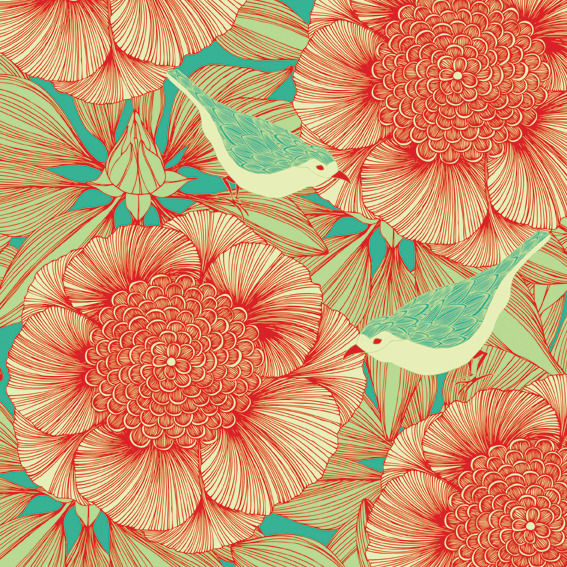
"Bringing the outdoors inside”: Camilla Meijer’s wallpaper and textiles will liven up any interior with an abundance of colour and pattern.
We caught up with Swedish designer, Camilla Meijer, to discuss how she has been inspired by London, nature, and vibrant, bold patterns. It’s a very busy and exciting time for Camilla as she is in the middle of preparing for her exhibition at 100% Design, and she is riding high on a sea of success. Her award-winning work is deservedly loved for her fresh perspective on floral patterns, and we love her detailed hand-drawings and exciting combinations of colour.
Read on to find out more about Camilla’s style and inspiration...
If you had 3 words to describe your style what would they be?
Colourful, fun and beautifully intricate.
You have been shortlisted for the British Design Awards 2010, what does this mean to you?
It means the world to me! To have the recognition for my work, my passion, the work that comes before everything... So, yes very happy and this inspires me to continue sharing my work.
Where does your inspiration come from?
Nature and all nature! I live and work in London so I take inspiration from people’s gardens, the city’s parks and where ever nature has decided to plant itself. I can’t walk down a street without zooming in on a bush with its leaves, or a flower with its quirky way of presenting its petals. Nature and its magical beauty just fascinate me.
How important are colour and pattern to your designs?
They are the key elements in my work! I love colour and love the way it makes me feel, and this I hope to share with others through my work. Pattern is how I give life to my illustrations by allowing them to tell a visual story within the design.
Your designs are possessed by impressionable, bold florals, how do you think floral prints have revolutionised interior design? And how do you think they will be used in the future?
We have always seen floral, nature inspired prints and I don’t think that will ever change. But I believe it’s the style of the design that will always keep florals in fashion.
What’s your ‘hero’ product and why?
I must say it’s definitely the LCW Chair by Charles and Ray Eames because for me it ticks all the right boxes. It’s stylish, cool, and beautiful with its perfect curves, shapes... It makes me happy.
What is the most recent design product that you have bought for your home?
It would have to be the sixth addition to my Moomin cup collection. I love the illustrations and they are just so sweet and colourful!
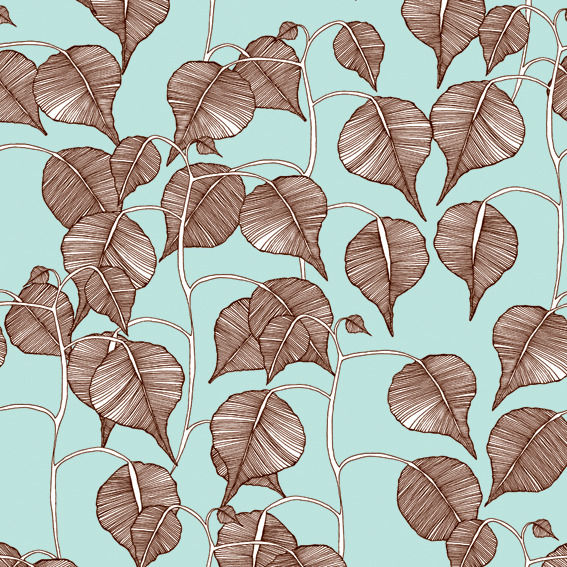
What’s your favourite material to work with and why?
My favourite material is fleece paper, a mix between fabric and paper and this I use for my wallpapers. I love working with it because it absorbs the ink beautifully and gives me this gorgeous print. It’s also really hard wearing which then makes it possible for my patterns to become a feature for a bathroom and kitchen area.
Where do you like to shop for quirky furniture pieces for your own home?
At the moment it’s more about window shopping, so, yes my favourite places would be twentytwentyone, aria, two colombia road, scp, caravan, bohemia... there are just so many lovely places in London selling collective and beautiful design pieces.
What advice would you give to aspiring interior designers?
Believe in what you’re aiming to achieve.
What new projects can we look forward to seeing?
I’m working on my new pattern collection for next year, so yes expect to see more intricate, colourful, cool designs! And at this moment I’m enjoying drawing my blossom print, yeah!
You can view all of Camilla’s designs at www.camillameijer.com. And visit Camilla at 100% Design, K81 on the 23rd- 26th September 2010.
Also, Camilla has been shortlisted for the British Design Awards 2010, and to find out how you can vote read our feature.
Interview: Hunkydory Home
We delve into the world of Hunkydory Home to discover the array of colourful prints and quirky home gifts.
Launched in 2005, Hunkydory Home is Alison Ellerbrook’s creative outlet. Alison found other interior products bland and uninspiring so she set out to create “something a bit different”. With a love of textiles and pattern, she takes pride in her creative handmade pieces and brings an innovative and vibrant style to conventional interior designs. With everything from cushions and lampshades to attention-grabbing accessories and kitchenware, Hunkydory products are bursting with colour and personality.
We caught up with Alison, founder of Hunkydory Home, and here’s what she said...
If you had 3 words to describe your style what would they be?
Quirky, fun, colourful.
Where does your inspiration come from?
I love Scandinavian design which I think stems from spending my early childhood years growing up in Norway. I love children’s products and colour, and I love to find products for grown-ups with a playful feel. I’m always on the lookout for new designers with fresh, new ideas.
Are the products you design for children inspired by your own childhood memories or children’s illustrations?
I make lampshades and cushions using funky fabric prints – I do hark back to memories from my own childhood - the ByGraziela Retro Heart lampshades reminds me of a duvet cover I had in Norway when I was 5 or 6 years old!
What’s your ‘hero’ product and why?
I have to say the lampshades and cushions that I make myself. Hunkydory Home started out just selling my own lampshades and cushions and has grown from there, they are the products that started it all off for me.
How important is colour to your designs/prints?
Bright, colourful funky accessories is what Hunkydory Home is all about so colour is very important. When I started making my cushions and lampshades it was all about creating home accessories that were not the boring beige and cream that was everywhere on the high street.
You use various retro designs on your products, why do you think that this is such a popular trend?
Retro is comforting for so many people, it can be fresh yet familiar. There’s also something fun about something your parents said was naff becoming fashionable again like the ‘ducks flying up the wall’ that we sell.
How do you think that print has revolutionised interior design, and how do you see prints being used in the future?
Print is important because it transforms any product and even changing the colourway of the same print design can give a whole new feel. I think we will see print becoming more integral in people’s interiors as they get braver about using it.
What is the most recent design product that you have bought for your home?
On my summer holiday in Holland, I bought some gorgeous white ceramic birds which are now on my kitchen windowsill. I also recently bought a lovely wooded stool with a colourful crocheted seat for my workroom.
Who is your favourite interior designer of all time and why?
I love Orla Kiely, her prints are fresh and contemporary yet have a comforting retro feel.
Where do you like to shop for quirky furniture pieces for your own home?
I am always on the lookout for things online particularly accessories. IKEA is still great for basics which can be customized or dressed up.
How important do you believe UK manufacturing is to our economy and the environment?
Vital, we have a very strong creative/design base in the UK which needs to be supported. I know so many talented designers with amazing products; I think we need to support small designer-makers and businesses to help grow the economy.
What new projects do you have on the horizon?
Currently we’re launching all our lovely Autumn/Winter products on the website and developing our winter gift guide. We will be working in collaboration with the Mushroom Works design studios in Newcastle in October/November to launch a pop-up shop which is quite exciting.
Browse through more of Hunkydory Home’s gorgeous gifts for your home at furnish.co.uk.
Interview: Abigail Borg
Award-winning surface designer Abigail Borg tells all.
Abigail Borg has taken the world of interiors by storm since graduating from Leeds College of Art in 2008 with a First in Printed Textiles & Surface Pattern Design. Picked out from thousands of graduates, she was named ‘New Designer of Year 2008’ and went on to set up on her own in January 2009. She’s continued to wow industry professionals and interiors obsessives alike with her beguiling floral prints, and was short-listed by Elle Decoration at the British Design Awards 2009. We caught up with Abigail to have a bit of a gossip.
How would you describe the Abigail Borg style?
All of my work begins with hours of hand drawing – an integral part of my style. I see it as a fading craft, and there is no comparison to a hand drawn illustration against something that has been knocked up in a few minutes on a computer screen.
I have then chosen to digitally print my wallpapers and fabrics, as I don’t have to compromise on colour or levels of details that I perhaps would if screen printing. If I could sum it up I’d say: ‘Hand drawn; Vintage Inspired; Contemporary.’
What’s your personal style at home?
I love going to car boots, charity shops and buying things off eBay, so there’s lots of knick-knacks: battered picture frames and prints, scuffed storage boxes and jars, old textiles, fabrics, and so on. I’d much rather buy an old chest of draws that’s been used constantly for 50 years, than a shiny, chip-free one. I also love being in the garden and spend lots of time planting and growing different flowers to photograph and draw, so there are lots of dried flowers about.
Your wallpapers and fabrics have a William Morris feel to them. What draws you to the Arts and Crafts movement and do you have any other favourite eras of interior design?
I love vintage design, particularly from the late Victorian period right up until the 1960’s – lots of patterns, hand drawing, colour and craftsmanship. I enjoy looking at styles from each period and incorporating them into my own style.
As an illustrator, are there particular artists that have influenced your work?
Designers such as CFA Voysey and Walter Crane, and companies such as F. Steiner & Co and the Calico Printers Association all influence me – I love the daring use of colour and the bold lines and pattern.
You have a very distinctive colour palette. How do you put together your colour schemes and what comes first – pattern or colour?
I generally hand draw and put together a pattern, and decide from there what sort of colour palette I’d like to incorporate. As always, I’ll look at archival patterns, as well as dipping into current colour trends to come up with something that has a good balance of the old and the new.
Why do you think florals work so well in interior design?
Florals have played a major part in interior design and decoration for centuries, starting off as tapestries, mural paintings and textiles, moving into the high fashion, modern settings of today. I think it’s because of this that floral patterns never date and will always work well in an interior setting. Wallpapers designed by Morris and Voysey during the late 1800s could easily be applied to a room today and not look out of place. I think the basis of good design is being able to apply a product into a setting from any era and it still looking bang up to date.
How is new technology and traditional handcraft combined in your work? What is the aesthetic result of this approach?
I love to hand draw as the level of detail and the slight imperfections are so much nicer to see that a perfected and pruned computer file. I experimented with screen printing a lot whilst at art school, and found that I had to alter the detail and reduce the amount of colours. From then on I started digitally printing, as this allowed me to have as much detail and colour as I like, resulting in designs that had both bold colours and intricate, contemporary patterns.
As well as producing your wallpaper and fabric collections, you work with clients on bespoke commissions. What has been your favourite project?
I love working on all commissions as each one is a new challenge, and no matter what the end product is you learn so much along the way. I really liked working with Johnson & Johnson on illustrations for some of their products. It’s nice to work on a brief together with an art director – and to think my drawings are in hundreds of bathroom cabinets makes me smile.
What’s your favourite high-street and high-end home furnishing brand/store?
Topshop! It’s affordable, with higher end pieces if you’re wanting to splash out, as well as having a bit of vintage in there.
And Liberty – there’s so much in there and every time I visit there’s always something new to look at. Plus the tea room is nice for a little sit down.
What’s been your best interiors bargain?
This isn’t so much a bargain, but salvage. My parents were cleaning out the loft of their house a few years ago, and on the ‘take to the tip’ pile was a shiny brown object. When I had a look it was a Guzzini mushroom ceiling light, which had been left there by the previous owner. They were going to throw it away as it was ‘ugly and dated’, so I immediately claimed it as my own!
Which three objects would you save if your house was on fire?
The Singer 3004; my mom bought it 27 years ago and it’s the best sewing machine I’ve ever used. A box I keep lots of photos, cards, notes etc in from friends and lastly my collection of design books, journals, bibles which I’d hate to lose.
What do think will be the next big trends in interiors?
From a wallpaper point of view, perhaps some new finishes or printing methods with larger scale patterns, particularly florals.
What’s next for Abigail Borg?
I’ll be moving into a studio space by the end of the year, with new products and lines in the new year. I’ll also be releasing a series of letter pressed Christmas cards in the next few months, as well as working on commissions for interior fabrics.
Find out more and buy online at www.abigailborg.com.
Interview: Snowden Flood
Snowden Flood gives us insight into her inspiration and she also offers some advice to aspiring interior designers.
For interior accessories designer, Snowden Flood, ‘Home is where the art is’ and this shines through in her designs which expose her love for urban and rural landscapes across the world. Snowden’s designs beautifully capture nature as well as her experience and knowledge of what she sees around her.
Snowden took some time out to answer our questions, and here’s what she said...
If you had 3 words to describe your style what would they be?
Eccentric, British, Nostalgia
Where does your inspiration come from?
Everywhere! From junk shops, art galleries, books, magazines and children’s drawings. Just going out of my front door and looking at the kids playing some odd game in the square; could be anything really.
Your work displays your love of landscapes and scenery. How much are your designs influenced by places you have been and experiences you have had?
Some are much related to experience, for example my Urban Landscape plates came from living in the north in a predominantly industrial landscape and sketches I’d done at the time. Others were inspired by things I found myself drawn to like the shapes that trees make at dusk against the sky; so that developed into a set of glasses. Other products, like my Rivers of the World cups and saucers, were inspired by a book I got from the local Oxfam store called “Great Rivers of the World’ – pieces by famous travel writers about river journeys. It was so evocative that I kept mulling over how you could draw an experience like that.
What’s your ‘hero’ product and why?
I love my world river cups and saucers because they are quite abstract and somewhat understated, and I like that it’s not immediately obvious what the design actually is! But in terms of general popularity, my hero products are the Battersea mugs, plates and aprons, because they are incredibly popular around the world!
Through your designs you explore the theme of souvenirs and keepsakes, is this influenced by your own nostalgic childhood memories and favourite holidays?
I think it has less to do with my nostalgia about my own holidays and more to do with being brought up in rural England by American parents. I was completely fascinated by their photos, stories and all the souvenirs of their former life, even their cars looked so glamorous. It all seemed so different from our lives in the UK, so far away! For example, my grandfather was a writer from California and was married to a silent film star and in a band with Bing Crosby’s brother. He later worked for William Randolph Hearst (who Citizen Kane was modeled on). I think you could say that 1960’s UK was a bit of a shock for my parents!
What is the most recent design product that you have bought for your home?
I have a bad flea market addiction! This week I became the proud owner of a 1940’s schoolroom poster of earthworms, for the princely sum of £4.
You spent many years at world-renowned New York architects Peter Marino & Associates. How much did you learn from this, and what was it like creating designs for clients such as Dior, Chanel and Louis Vuitton?
I learned lots working at Peter Marino. They are known for several things: the quality of the work but also for their ‘revolving door’ policy, i.e. it’s a very hard place to work and most don’t stay beyond 1 year (I worked for them for 8yrs!!). Part of my job was to travel to shows around the world and come up with ideas and concepts. I also had to find manufacturers to make the pieces we designed for our clients. So for example, I might attend a technical textiles show in Germany looking for manufacturers to weave a Chanel plaid in carbon fibre. Then I’d go to the Netherlands to see someone who could embed that fibre into resin panels for a new store in Japan. It was fun but stressful because these clients came to us to provide them with innovative ideas, and the level of quality always has to be the highest. The residential projects were fun, our clients were some of the richest in the world and wanted things in their houses that are completely unique. All good experience for my own business!
Who is your favourite interior designer of all time and why?
There are two that I particularly like. David Hicks for his use of colour and pattern and Oliver Hill because I love Art Deco and his mix of art deco and modernism is very stylish.
What’s your favourite material to work with and why?
I don’t really have a favourite material. I have ideas for everything and don’t really like to be restricted. If you insist I’d say bone china, I like the quality and warmth of it, the colours can be very pure.
What’s your favourite high street home furnishing brand/store?
To be honest I prefer to shop in smaller independent stores and tend to stay away from the high street in general. So… I’d head to Columbia Road in London; I like museum stores like the V&A and the Tate Modern. Other stores I like are places like Mint, Lucas Bond, Abigail Ahern. Out of London some favourites are Article in Dublin, the Craft & Design centre in Manchester, Home Autour du Monde in Paris, Rare Device in San Francisco and NY, the MoMA store and Moss in NY.
What advice would you give to aspiring interior designers?
Have fun and don’t be afraid of colour and personality! I’m not a fan of the beige and brown school of interiors I must admit! Look at people like Wary Meyers, Kelly Wearstler, Todd Oldham.
How important do you believe UK manufacturing is to our economy and the environment?
Well it’s very important to me personally. In terms of quality and integrity of a product it makes all the difference to be able to go to the factory and discuss the issues. I work very closely with my UK manufacturers, and they are following a tradition of craftsmanship that is a key part of the product. However, I would just say that it’s not always easy to manufacture here. Customers have become used to high-street prices and don’t always appreciate that those prices are a result of mass production and – sometimes – low quality. Not everyone wants to buy something that was lovingly and carefully made if it means they have to pay an extra £10 for it!
Are there any designers that you would particularly like to collaborate with in the future?
I like working with Alex Gorlizki and often find that looking at his work gives me ideas. I like Marian Bantjes and Leah Giberson and their work is interesting to me.
What new projects do you have on the horizon?
Lots! I’m working on some new products in polymers as part of a Hidden Art initiative. Also for Hidden Art, I’m part of a consortium proposing design-led gifts for the London Olympics. In addition to this I have two new product ranges in production and am finishing up production for some custom products for Chatsworth House in Derbyshire. Busy!
You can find more information and all of Snowden’s designs on her website at www.snowdenflood.com.
Interview: Turner Pocock
Bunny Turner and Emma Pocock spill the beans.
Turner Pocock is a London-based interior design company providing a tailored service for private residential and commercial clients in the UK and abroad. Established by Bunny Turner and Emma Pocock, the company specialises in sourcing contemporary art and commissioning bespoke furniture. With a keen grasp of design history and an eye for style, Turner Pocock creates sumptuous, liveable spaces in which old and new are deftly combined. A love of colour, pattern and texture is evident throughout, and in a recent venture Turner Pocock teamed up with artist Catherine Cazalet to produce a series of graphic and vibrant wallpapers. We caught up with Bunny and Emma and here’s what they had to say:
How would you sum up the Turner Pocock style?
We’ve been described as having a schizophrenic style because every project we work on is so different – we prefer it that way as it keeps us on our toes! I suppose what defines us is a eclectic approach where we mix contemporary and antique pieces to give a feeling that the room has come together over time – rooms can look over designed and unlived in if everything is new!
You’ve created a series of sophisticated yet playful wallpapers with Catherine Cazalet. What inspired you to create a collection of wallpapers and how the project evolved?
We’d always wanted to get into product design and development and as we use a lot of wallpaper in our schemes it seemed the obvious choice. We also felt there was a void in the market for children’s wallpapers that weren’t clichéd in their use of colour or subject.
What led you to the distinctive sporting and animal prints?
Catherine developed the cricket paper concept while she was in India where they are fanatical about the sport – we felt that the small pattern repeat worked really well and decided to explore other England-centric sports in the same way. Tennis seemed like the obvious second subject. Both sports have a retro feel to them and are quintessentially English. The zebra design stems from Catherine’s paintings/murals of Zebras, which she has become well known for so that was really the starting point.
Who would be next on your list of ideal collaborators?
We’ve got our eye on a fab fashion textile designer who’s based in Singapore at the moment.
As specialists in sourcing contemporary art, how has a love of art influenced your choices in interior design?
Art and accessorising is very important in all our schemes – the pictures/sculptures/objects can make or break a room. Sometimes we will even start scheming from a picture and take the colour/style lead from that point.
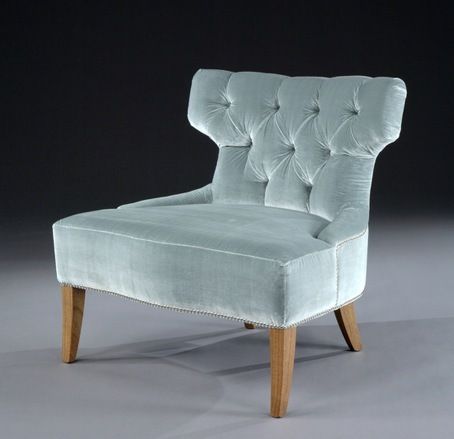
Are there particular artists that you look to when thinking about colour schemes?
We don’t have a huge amount of control over this as the choice of artist is driven by each client and varies hugely depending on our brief. Scale is as important as the style – a grid of small pictures can look fantastic and make a small room feel bigger – likewise a large, dramatic painting or photograph can create focus and hold a room together.
Your work shows a real appreciation, and elevation, of material qualities and craftsmanship. Creating interior spaces that are perceived and experienced sensually, which materials to you particularly like to work with?
We love using different textures/patterns - it makes the experience of a room much more interesting. We use shagreen [shark skin] a lot – our furniture collection demonstrates that!! But we also like to mix the use of stone, wood, lacquer, mirror on wall/floor/joinery finishes. Walls are also a great place to add depth and texture – either with a patterned wallpaper, or grass cloth and polished/textured plaster. Then we finally look at the fabrics and make sure that there is as much variety as possible – mohair, linen, silk, satin. Geometric patterns, plains, stripes!
Many of your furniture pieces have an Art Deco feel to them. Do you have a favourite historical period in terms of interior design and furnishing style?
We mix styles and periods – each era produced fantastic iconic pieces and it’s a question of mixing the best from each period to create a fusion of styles that doesn’t feel over-designed.
How would you advise people on combining historical references and contemporary styling in one space?
They should buy what they love and that way their taste will be what unites the scheme.
Which have been you most enjoyable/memorable interior design projects?
One of our first projects was for a client who didn’t say no to anything! He trusted us and had great existing furniture for us to work around. We’ve also worked on some fantastic projects abroad – in Bahrain and the South of France – it’s amazing how the different lifestyles/environments/light affects the way we design. We love the variety.
If you could design a room for any person (dead or alive), who would it be and why?
Matthew Williamson – he has a great sense of style and colour which we’d love to work with.
Which current homeware designers do you particularly admire?
Tom Dixon, Kelly Wearstler’s rugs and fabrics, Ashley Hicks and Neisha Crosland’s rugs and fabrics.
What’s your favourite high-street and high-end home furnishing brand/store?
The Conran Shop and Andrew Martin.
What’s been your best interiors bargain?
We’re both magpies and always keep our eyes out for beautiful useful things. We’re particular fans of framed antique flags and pick them up whenever and wherever we find them – usually from flee markets. Maps are also another favourite find and they don’t cost the earth.
Which three objects would you save if your house was on fire?
We’re both constantly changing how we want our homes to look so the objects are less important –think we’d have to say it would be people and pets! And maybe some precious pictures. It would also give us an excuse to redecorate.
What do think will be the next big trends in interior design?
Hopefully an end to neutral/taupe colour schemes! Luckily we don’t tend to follow trends so it’s not really important to us!
What’s next for Turner Pocock?
We’re working on some exciting projects in the UK at the moment and hope to introduce some new wallpapers to the existing range towards the end of the year. The main aim for Turner Pocock is to do a ski chalet – we’ve both enjoyed living in the Alps at different stages in our lives and have dreamed about creating the perfect chalet ever since!!
Find out more about Turner Pocock’s interior design service and bespoke furniture collection at turnerpocock.co.uk. The wallpaper collection can be viewed and purchased online at turnerpocockcazalet.co.uk.
Interview: Nick Fraser
Nick Fraser’s been taking the world of interiors by storm with his playful and subversive rethinking of everyday objects.
Since graduating from the University of Plymouth in 2005 with a degree in 3D Design, Nick Fraser’s been taking the world of interiors by storm with his playful and subversive rethinking of everyday objects. After an enthusiastic reception exhibiting with Hidden Art at the 2006 Milan Furniture Fair, Nick began manufacturing his designs from a small studio in Dalston. Made in the UK and finished by hand (his own), Nick Fraser products are now sold across Europe. You can find them at Paul Smith and the Barbican in London, Fleux in Paris and Moderna Musset in Stockholm. I seem to be banging on about Paul Smith a lot lately, but I must admit I was pleased that Nick’s designs have caught Sir’s glad eye as much as my own. Impeccable taste. Anyway, here’s what Nick had to say about his own design inspirations when we caught up with him at Grand Designs Live last month.
Which designers do you admire and which have been inspirations to your work?
Current designers I admire include the Hella Jongerius Lab, Committee and 5.5 Designers.
I always find this question difficult because I seem to remember products more than people…however terrible that sounds! A lot of my work is based on looking at various everyday objects and highlighting their visual or functional qualities through re-appropriation…I suppose this is where my inspiration comes from.
What’s your own style when it comes to interior design?
I like a room or space to be very simple and neutral in its foundations such as the furniture, layout and wall colours. It’s then objects that you put around the space, which will make it more unique and personalised.
I love the sculptural, architectural qualities of your work and especially the sort of Meccano/kit construction aesthetic of your industrial Pipework Series. How did the series develop?
When I was studying Art A level, I made a very large sculpture using plumbing materials. Referencing the illustrator Heath Robinson’s drawings of eccentric machinery that mock Modernism, the sculpture was designed to look hyper-functional but actually did nothing at all. My teacher at the time encouraged me to plumb it into a house as an installation but of course being 18, it never happened.
So once I had graduated from a design degree, I re-visited the idea but made it functional and ultimately more commercial. I started with the Hall Stand, which was an elaborate piece that I exhibited in Milan in 2007. It was received very well and since then I have created many variations, and these have become a large part of my business.
What struck me most at Grand Designs was your fork light. I really liked the faceted, geometric qualities of the bird, which I felt prevented the design from becoming twee. Could you say a little about the ideas behind the fork light and how it developed?
As you have probably noticed, I really enjoy the visual qualities of functional every day objects. This extends to the outdoors and I had my eye on the pitchfork for a while. Once I established the simple tripod structure to create a stable lamp base, it was a case of brainstorming what would make a relevant shade.
The bird seemed the obvious choice, depicting the quintessential English garden image, but as you have mentioned, it was important to maintain a contemporary result and avoid twee(ness). The creation of the bird required a lot of paper cutting and folding!
In a lot of your products you seem to be turning things inside out – for example, exposing industrial pipes, bringing the outside inside with your bird branch mug ‘tree’ and fork standard lamp. Would you say this is the common thread running through your work: a playful subversive approach to everyday objects?
Absolutely. It’s really important to me that people see my products and smile because they can understand the story behind them. By manipulating recognisable objects and placing them in a new context, it allows the viewer to enjoy them in a new light, visually and functionally.
Although humour and familiarity are important aspects in my work, it’s still necessary to create products that people can live with and use for a long time. I hope that I achieve this and can continue to do so as I don’t really want another job!
Find out more at www.nickfraser.co.uk...

